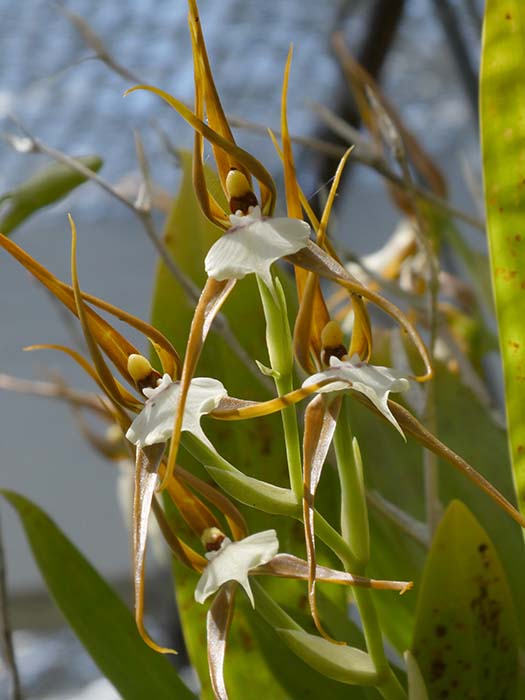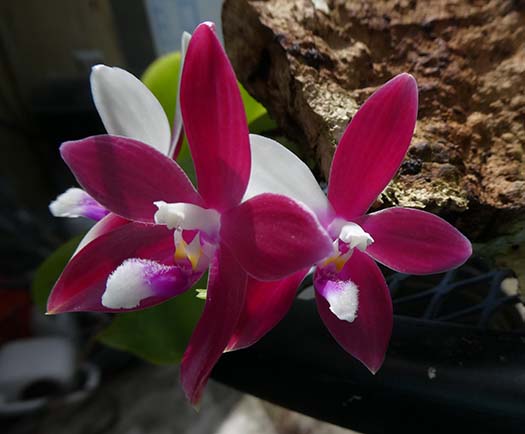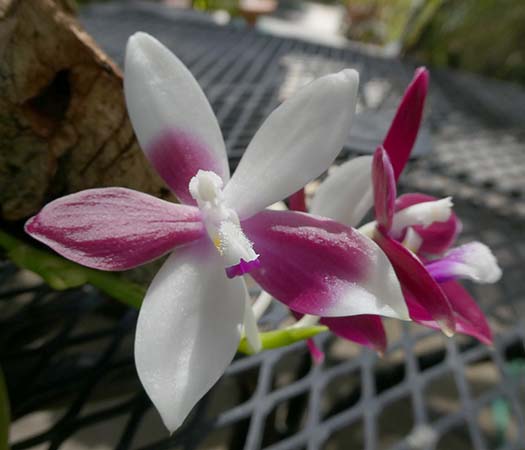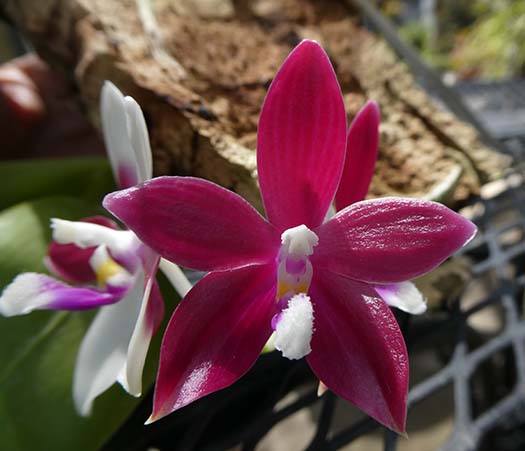August 2022
From Kurt Shanebeck:
|
|
Outdoors coastal, north of Los Angeles: |
|
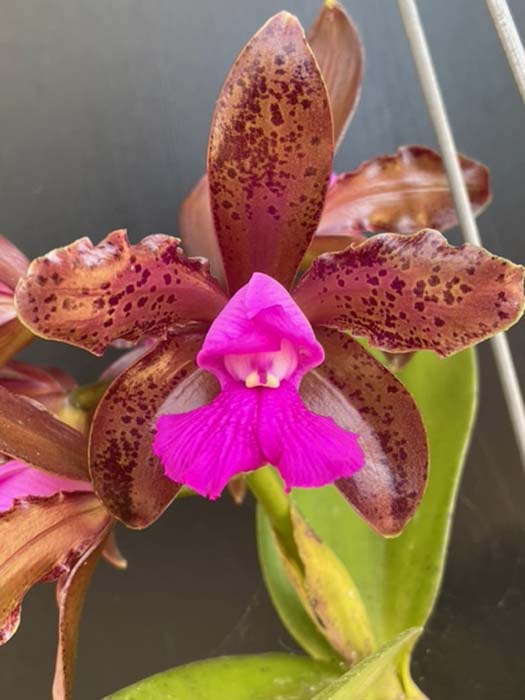 |
|
Cattleya tigrina (leopoldii) |
|
Cynorkis gibbosaAttractive Madagascar terrestrial with mottled leaves and unique flowers. Growing potted in bark mix with bright light. |
|
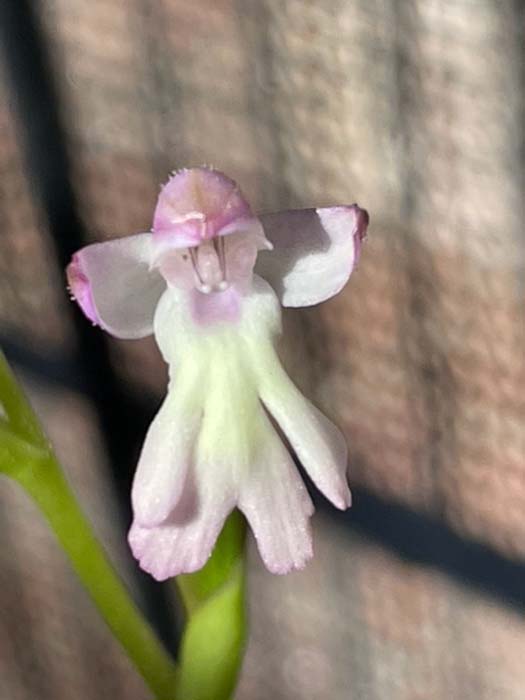
Cynorkis fastigiataThe infamous prolific orchid known for readily sprouting from seed. Grown potted and shady |
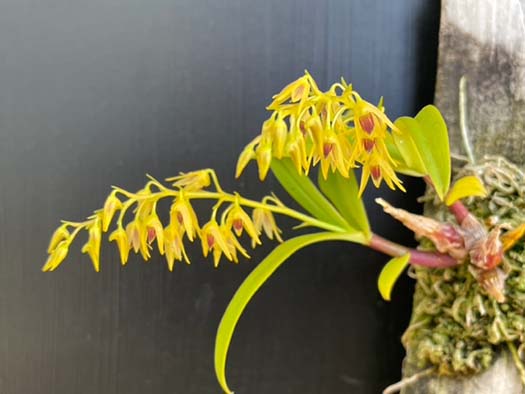
Dendrobium porphyrochilumA small Himalayan orchid, growing mounted with bright light |
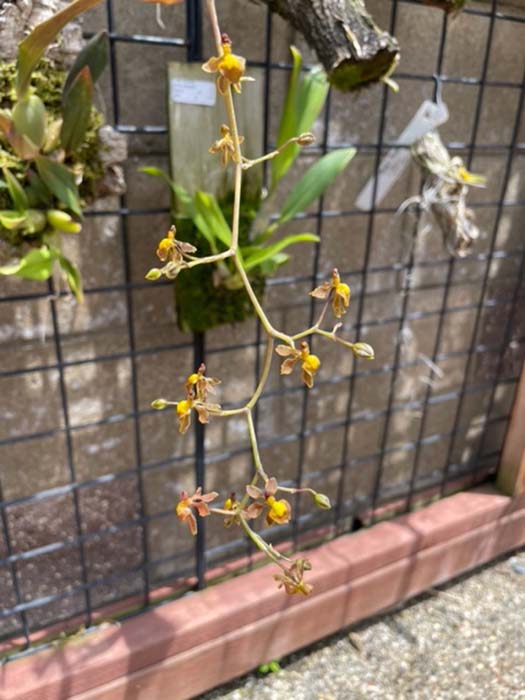 |
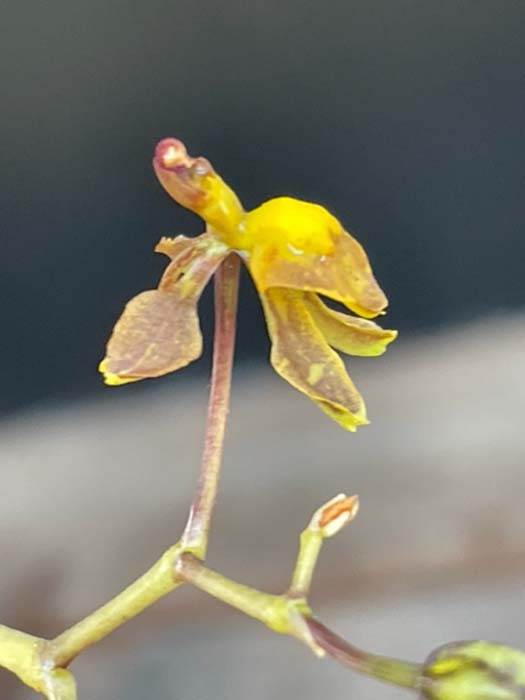 |
Cyrtochilum cimiciferumFrom South America at elevations from 1850-2250m. 1/2” bug like flowers. Growing mounted with bright light. |
|
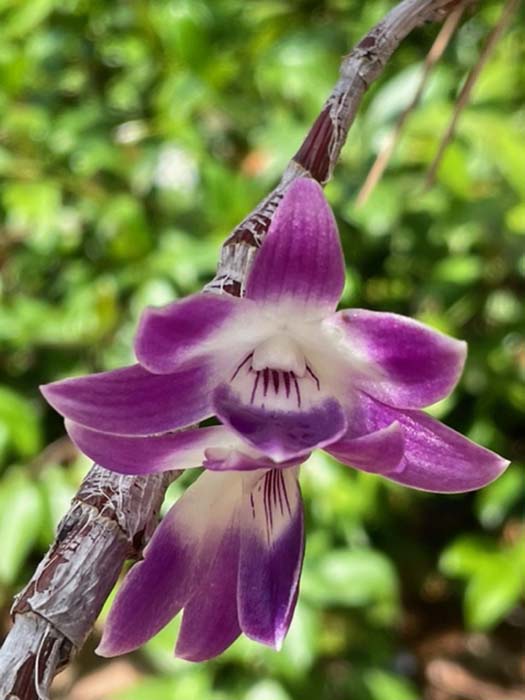
Dendrobium victoria-reginaeFrom the Philippines, a frequent bloomer from leafless canes. Growing potted in a bark mix with frequent watering. |
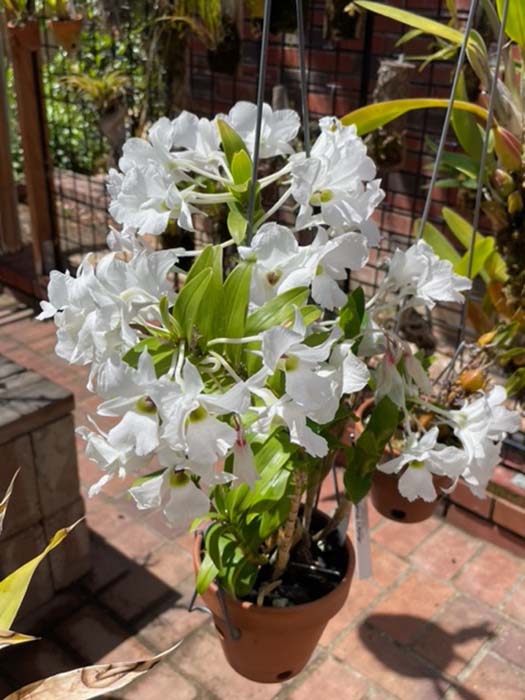
Dendrobium sanderaeA floriferous Dendrobium from the Philippines. Growing potted in a bark mix with bright light. |
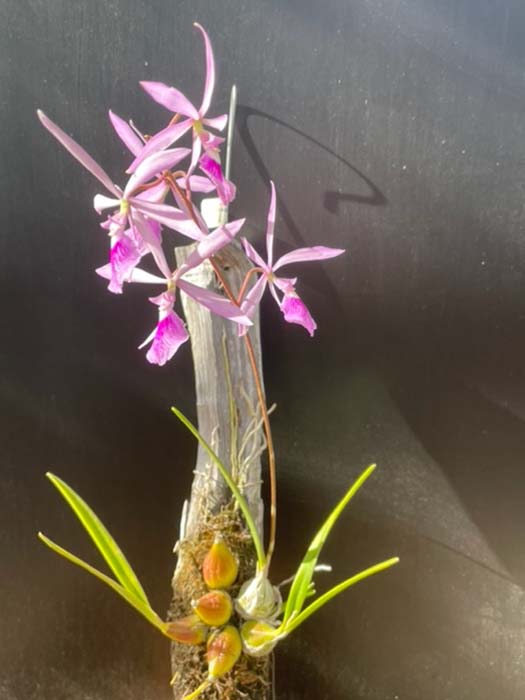 |
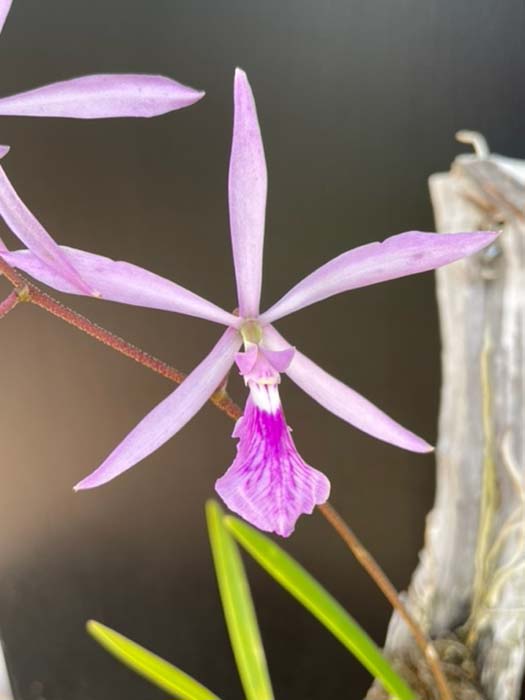 |
Encyclia adenocaula ssp. guadelupeaeFrom Mexico, growing mounted with bright light. |
|
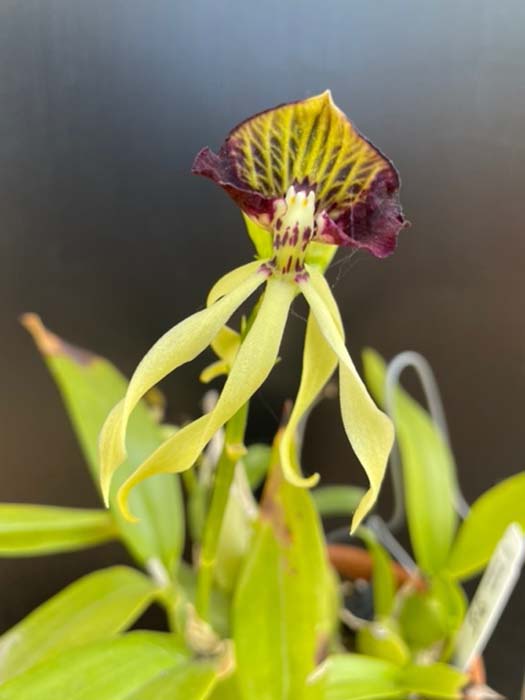
Prosthechea (Encyclia) cochleataGrowing potted in a bark mix with bright light. |
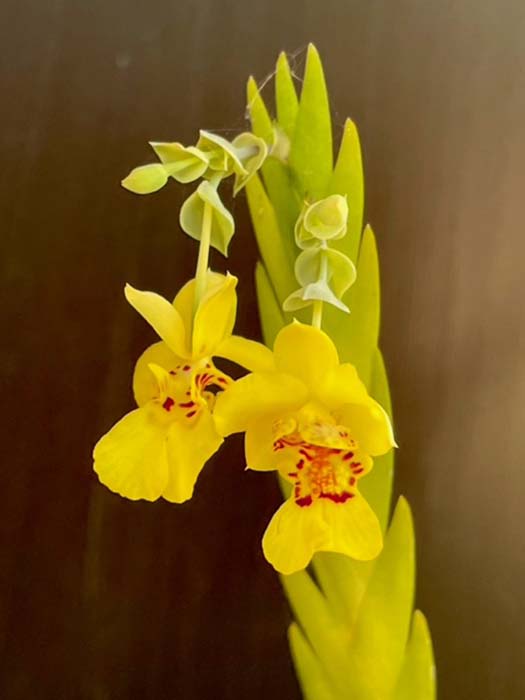
Lockhartia oerstediiPlant has interesting growth habit with a braided appearance. Growing mounted with bright light. |
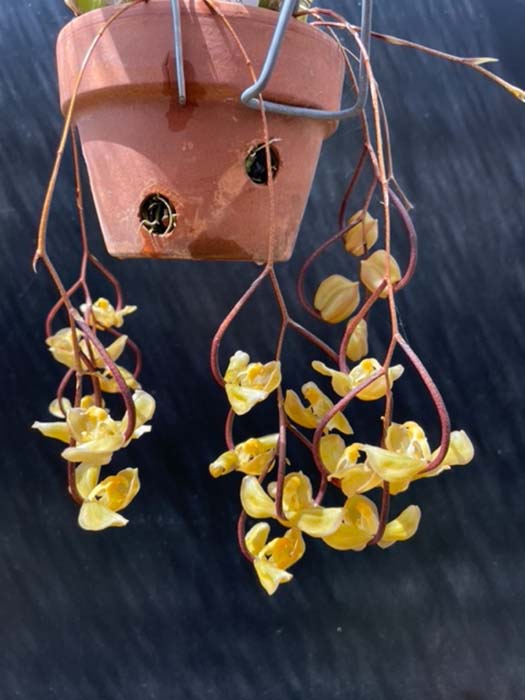 |
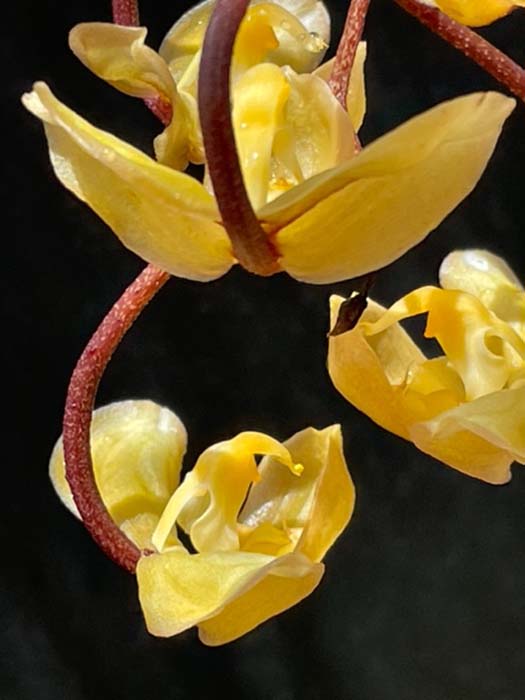 |
Gongora batemannii (cassidea)Unusual flowers on pendant inflorescence. From Central America, growing shady in a bark mix. |
|
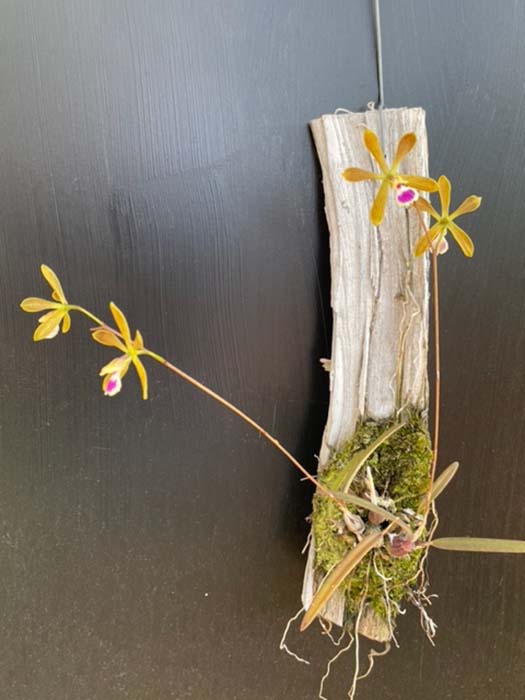 |
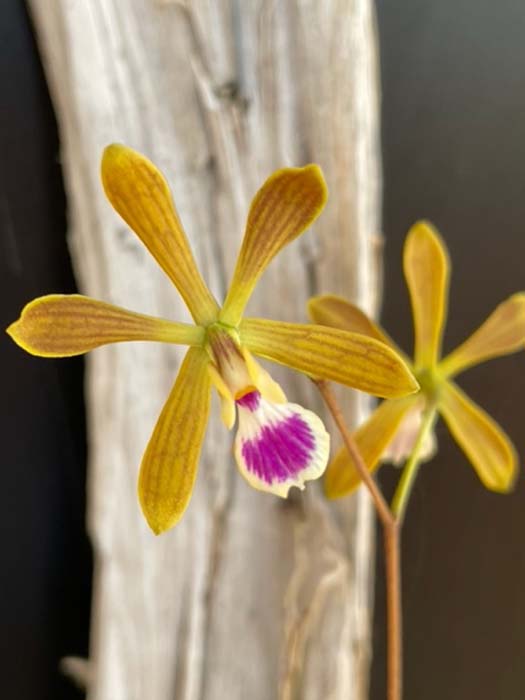 |
Encyclia tampensisNative to Florida. Growing mounted with bright light. |
|
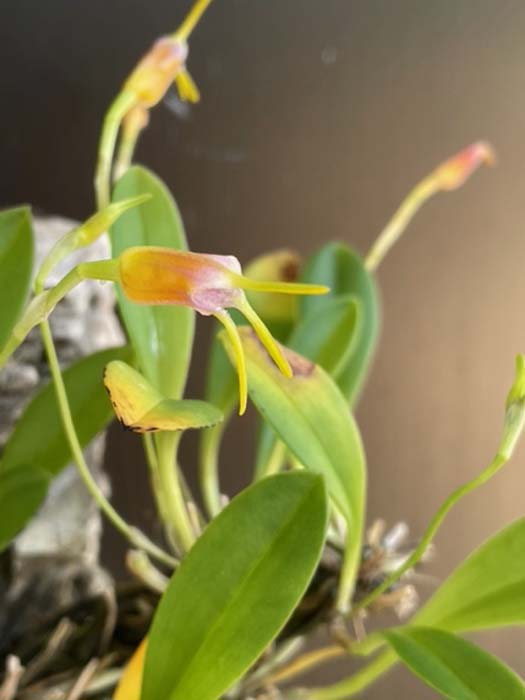
Masdevallia paevianaGrowing mounted on cork, growing shady and moist. |
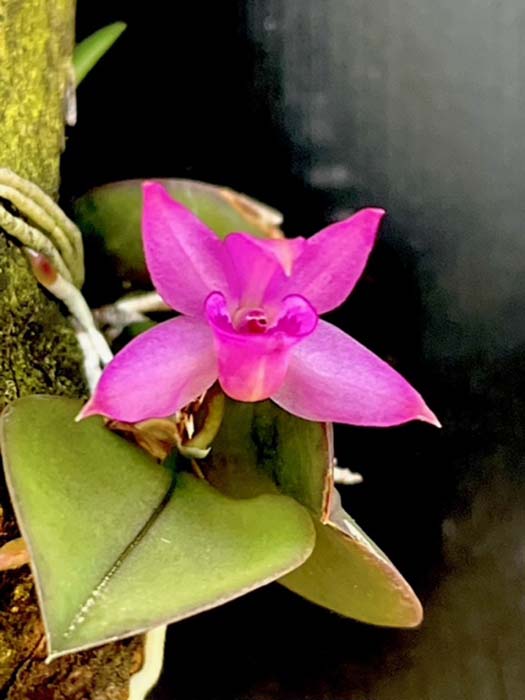
Meiracyllium trinasutumSpecies from Mexico, growing mounted with bright light. |
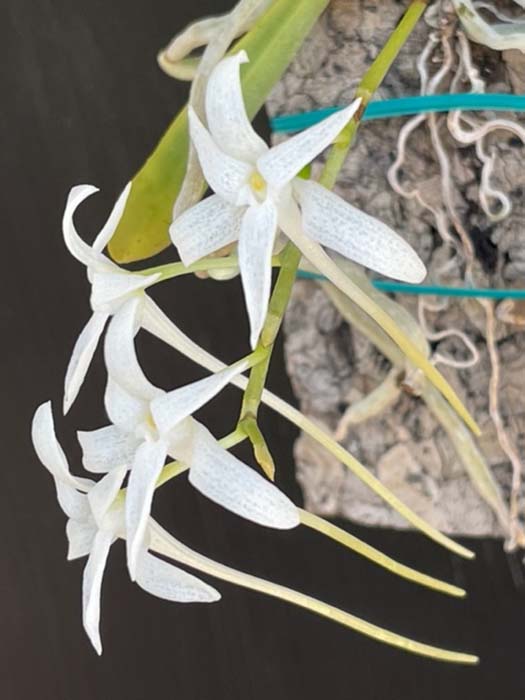
Mystacidium capenseFrom South Africa, growing mounted and shady. |
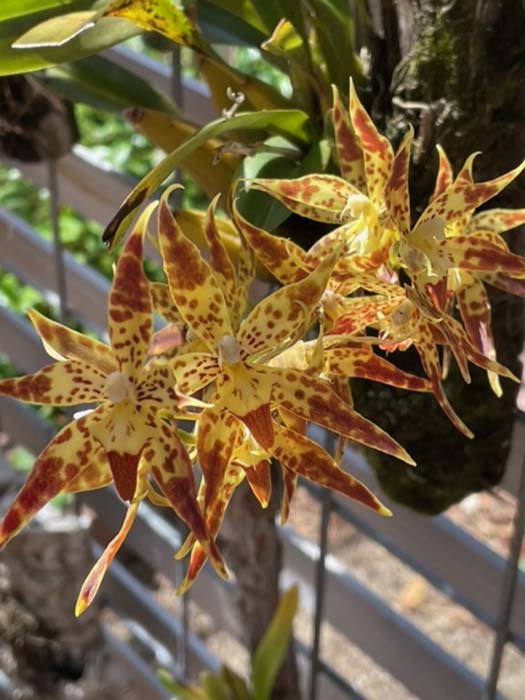
Oncidium (Odontoglossum) praestanoidesGrowing mounted under intermediate light. |
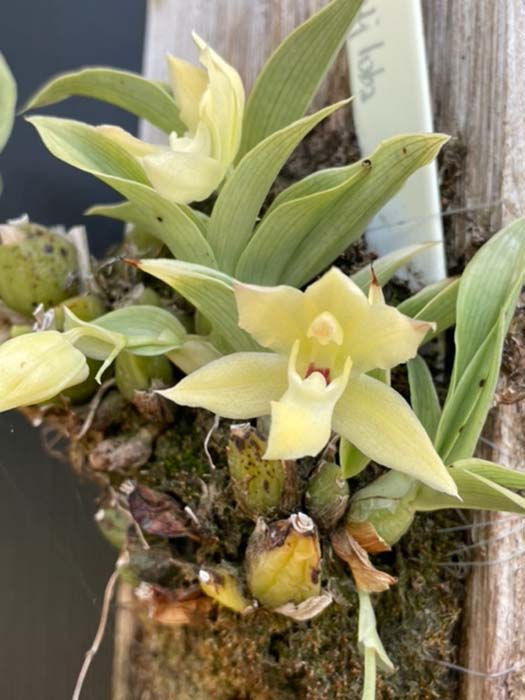
Promenaea ovatilobaBrazilian species growing mounted with bright light |
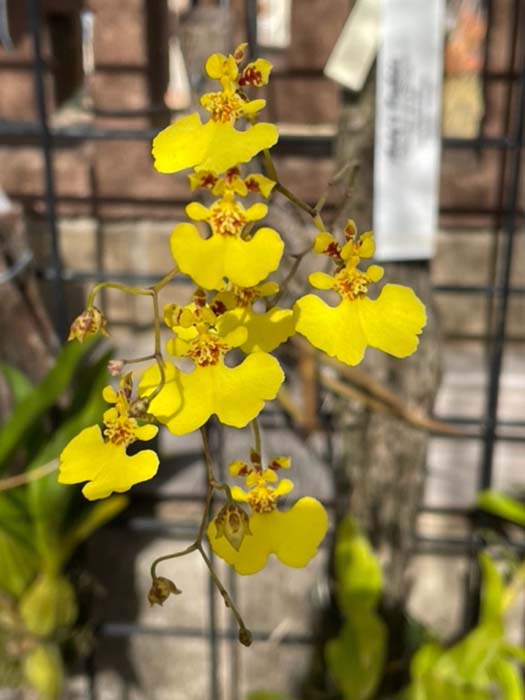
Tolumnia urophyllumCaribbean species growing mounted with bright light. |
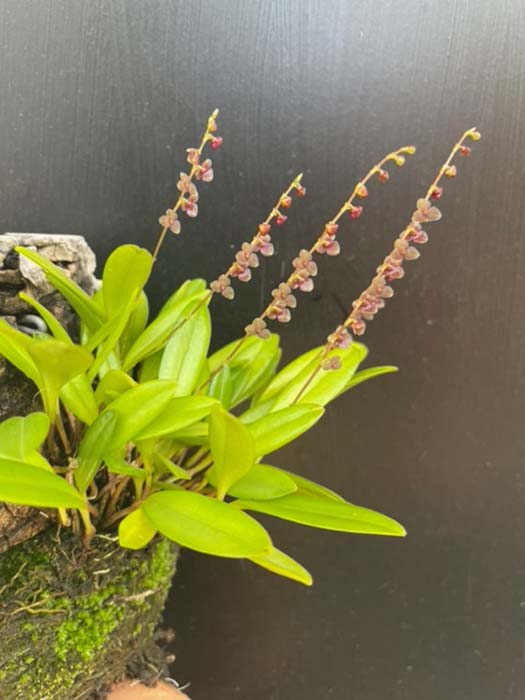 |
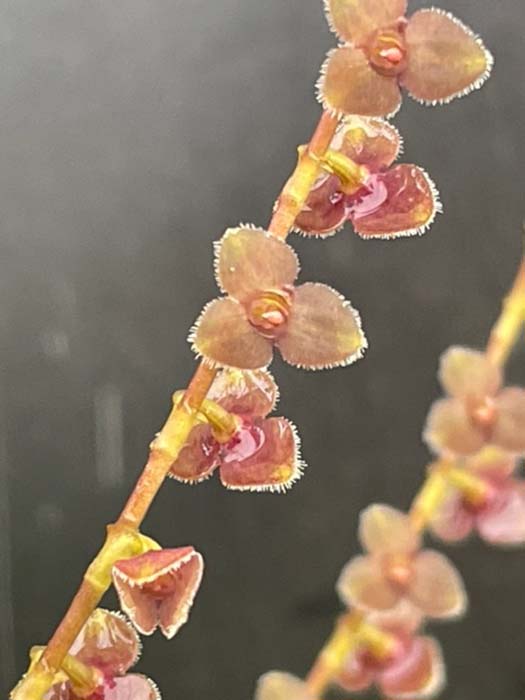 |
Stelis sp.Unnamed Stelis species. Growing mounted, shady and moist. |
|
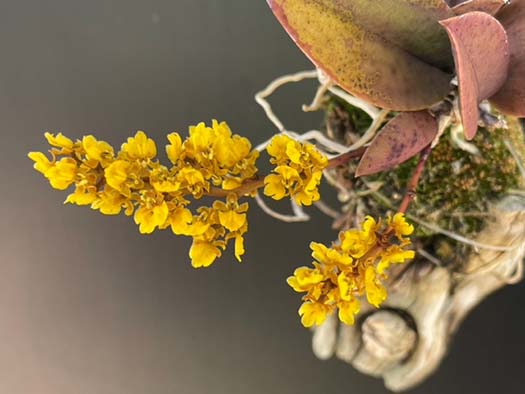 |
Trichocentrum pumilumSmall flowers on a small plant, growing mounted with bright light |
From Scott McGregor:All orchids grown outdoors, coastal southern California |
|
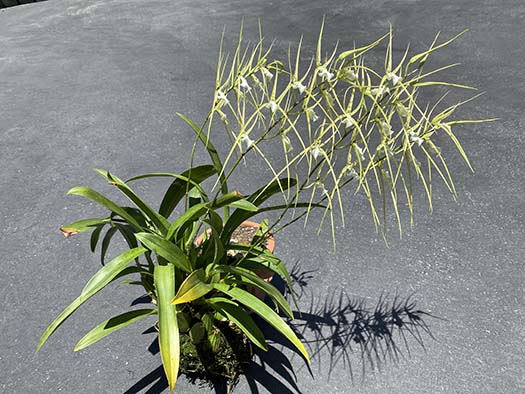
Brassia verrucosaMost Brassia species struggle in our climate, but B. verrucose grows widely in mountainous Central America and does great outdoors here. Give it lots of light, water and fertilizer and it will double in size every year, and produce long spikes of spidery flowers. Not a mini—the flowers can be 16-18” from tip to tip. It has a strong grassy/peppery fragrance, distinctive but not especially delightful. |
|
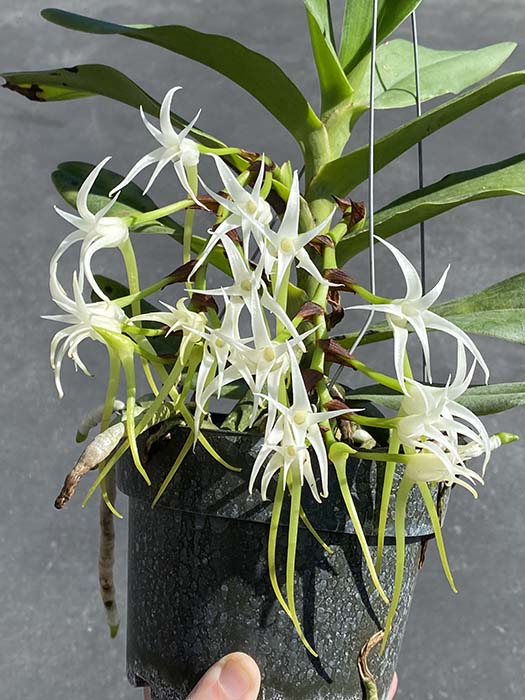 |
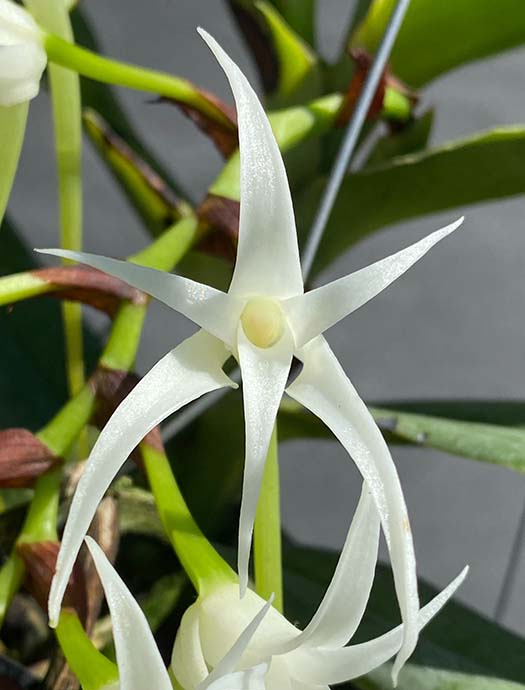 |
Cyrtorchis arcuata ssp. whytei 'Northern'An Angraecum relative widely distributed across Africa. Fragrant at night. The subspecies whytei has wider leaves and a longer spur than typical. |
|
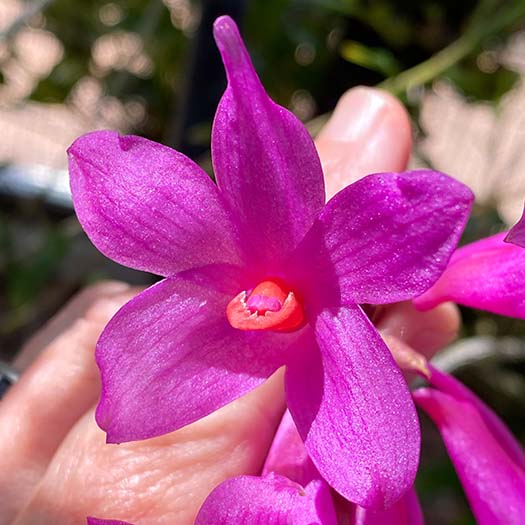
Dendrobium sulawesiense (glomeratum/crepidiferum)A cool-grower from the Moluccas Islands (near PNG). Relatively easy compared with D. cuthbertsonii and hybrids look identical to the cuthbertsonii parent but have the ease of culture of this one. |
|
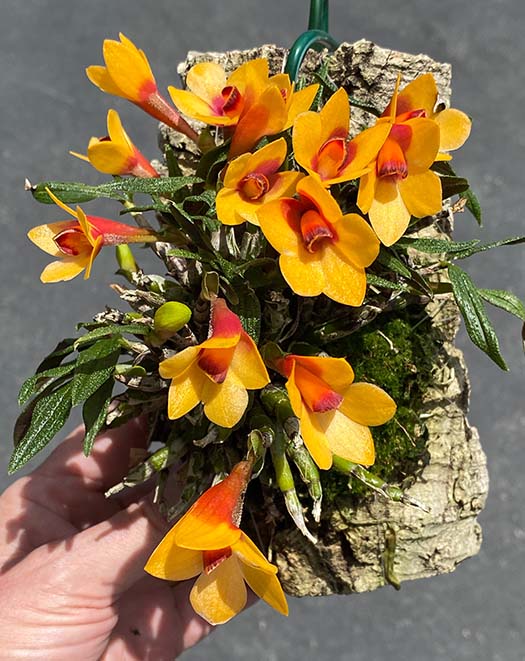
Dendrobium (cuthbertsonii x sulawesiense) x cuthbertsonii "Bicolor Select 2"This isn’t quite a species but is a primary cross, crossed back to the species, and the only way I’ve found to keep D. cuthbertsonii alive and happy. The D. sulawesience seems to contribute only hardiness as the plant and flower look identical to the D. cutherbertsonii parents. You can explain to people you can grow D. cuthbertsonii-- they will be jealous and won’t be able to tell! It is available from several sources and comes in all the usual D. cuthtbertsonii colors and bicolors. |
|
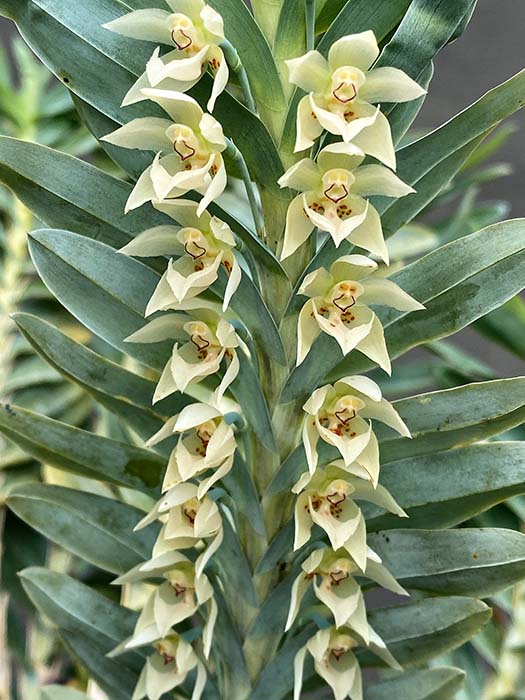 |
|
Dichaea glaucaOvergrown into a small bush with a couple dozen flowering canes, very fragrant flowers emerge from the leaf axils of both old and new canes. The Latin word “glauca” describes the blue-gray color of the leaves. I grow it very bright (30% shading) in a basket that originally had sphagnum and perlite in it, but is mostly just a root ball now. |
|
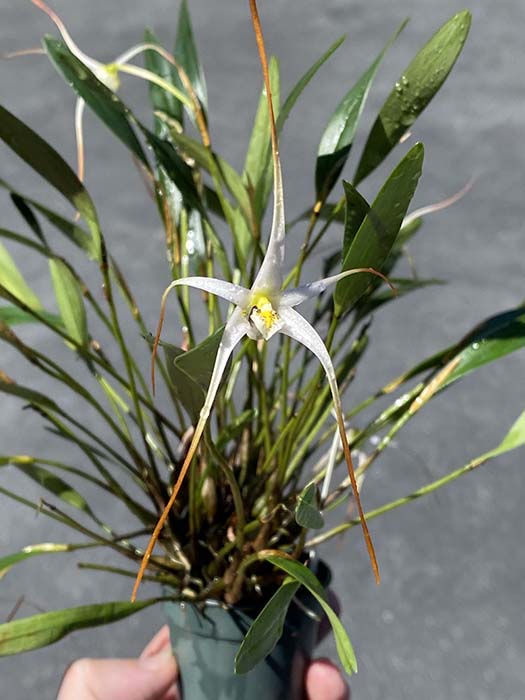
Diplocaulobium aratriferum 'Watermelon rind'Another flush bloom on this one-day wonder—it has bloomed five times so far this year. The short-lived flowers smell strongly of watermelon. |
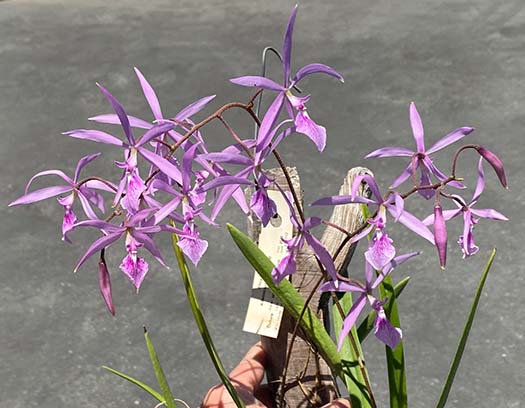
Encyclia adenocaula ssp guadalupeaeA compact subspecies of Encyclia adenocaula from Mexico. |
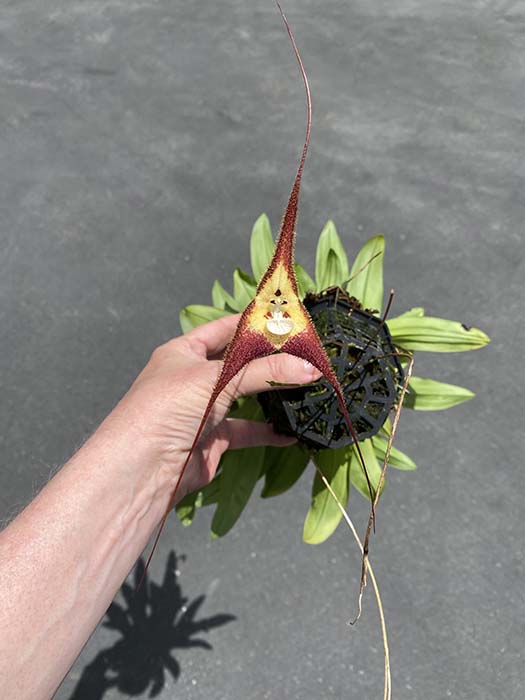 |
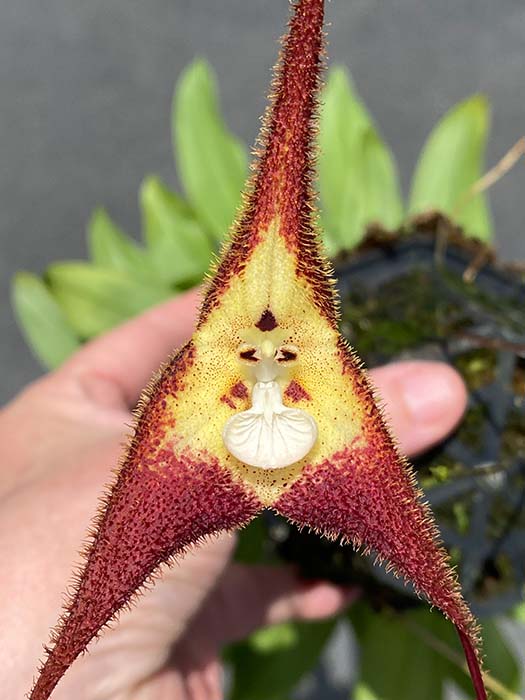 |
Dracula tubeanaLike most Draculas, flowers emerge sequentially from downward facing spikes and face the ground. They also wilt on warm days. This is a relatively easy species from Ecuador with large 10-12” flowers, a cute “face” and lots of fuzz. |
|
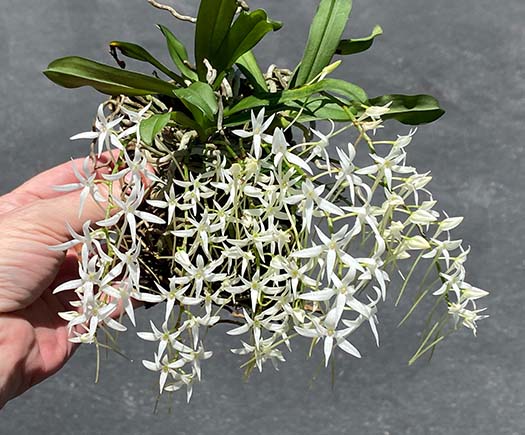
Mystacidium capenseI’ve had this South African angraecoid for 8 years and it has given me a couple of spikes and mostly poked along. It sure got happy this year! It likes to be mounted so it dries out and kept fairly shady. |
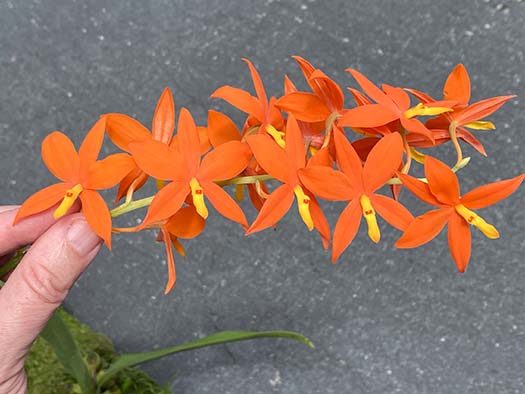
Prosthechea (Encyclia) vitellinaMy plant is blooming a few weeks behind Roberta’s from last month. About as saturated orange as you can get! Keep cool & moist. |
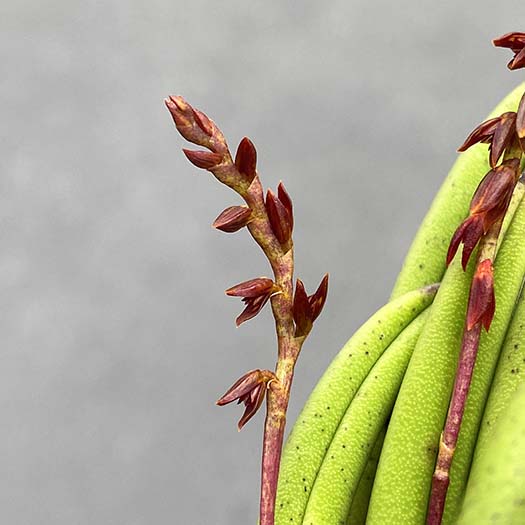
Pleurothalis teresThis is an odd plant—a Pleurothallis that has terete leaves, grows in bright sun and low water with rupicolous Laelias, has small drab flowers that barely open, and doesn’t smell good. Besides all that, it is a cute compact plant and perhaps looks best when it isn’t in bloom! |
|
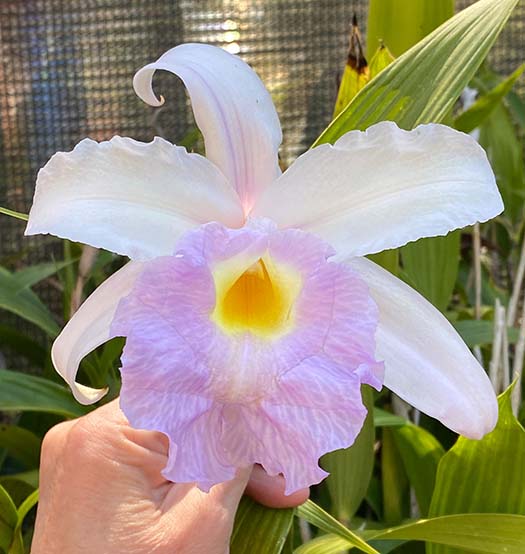
Sobralia sanderaeAnother beautiful Sobralia species—no need for hybrids! |
|
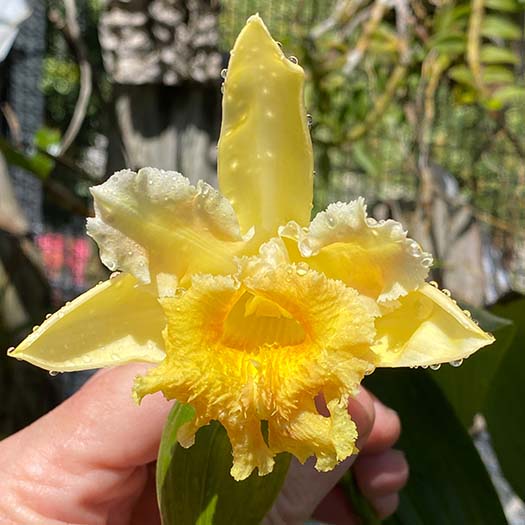
Sobralia xantholeucaA frilly-lipped yellow clone of S. xantholeuca. |
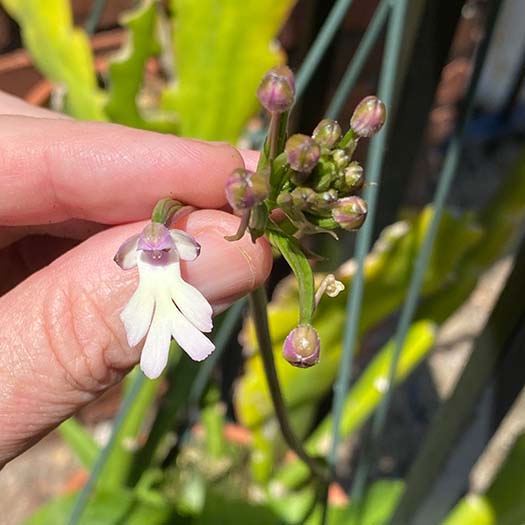
Cynorkis fastigiataThe “weed” Cynorkis opening its first flower of the season, growing in an Epiphyllum pot. It just appeared in the pot this year. See my Orchid Digest article for more info—I’ll let it go to seed this year to share the plague! Cute little guy… |
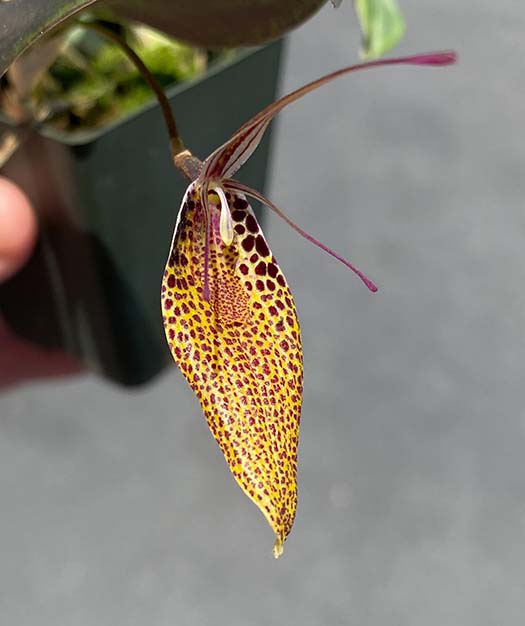
Restrepia sp. (probably antennifera)Relatively large (for a Restrepia) spotted flowers. Many Restrepia species come in stripped and spotted-lipped forms, this being the latter. |
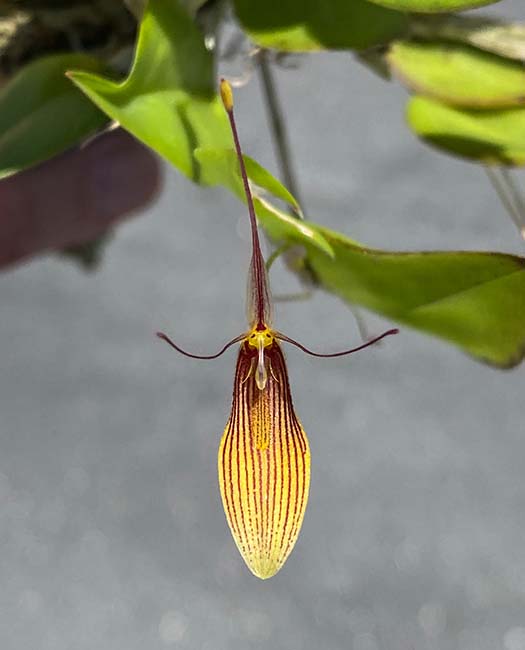
Restrepia brachypus v. striataA cute little Restrepia. Many species of Restrepia come in striped and spotted-lip variants, this being the striped form. |
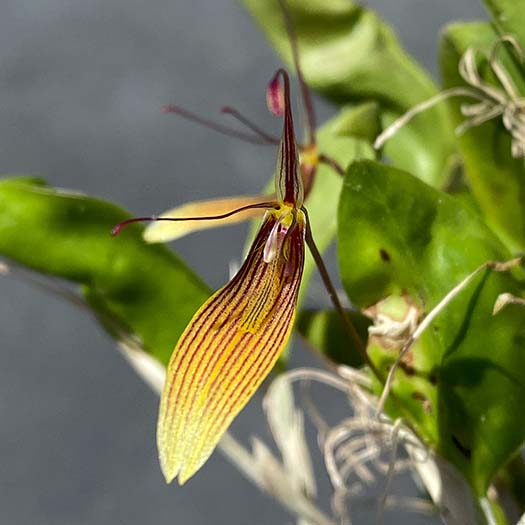 |
Restrepia trichoglossaAnother Restrepia-- the more common striped-lip variety. |
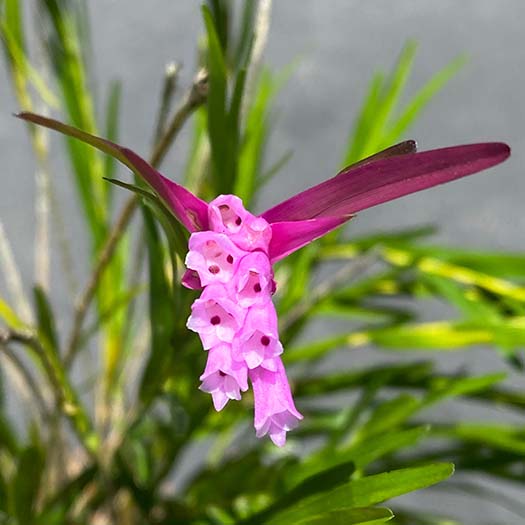
Isochilus major 'Santa Barbara'This species grows widely from Mexico down to Colombia, and flowers at the end of graceful arching canes about 16” long. This variety from Santa Barbara Orchid Estates has strikingly-colored leaves and bracts that appear just before the buds emerge. If you have hummingbirds, you will have seed pods! |
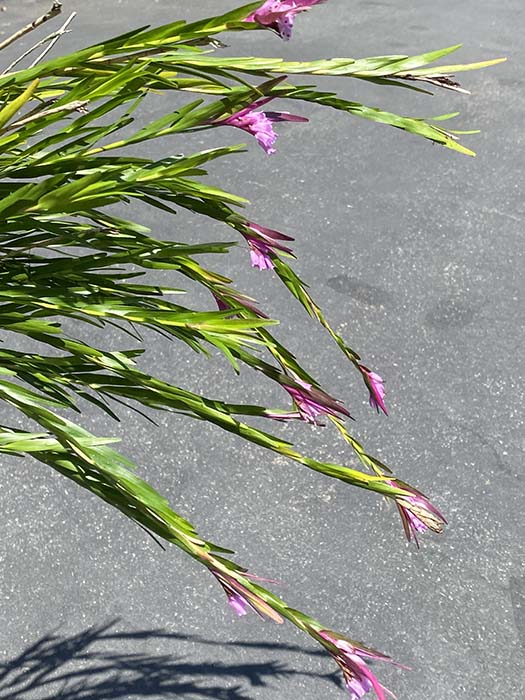 |
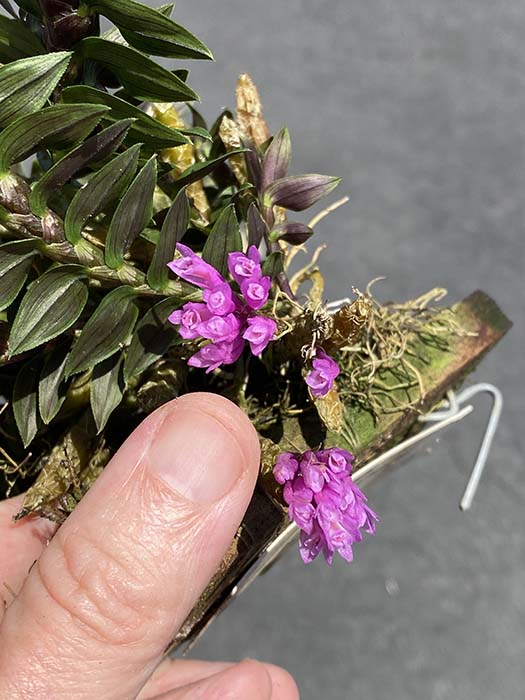 |
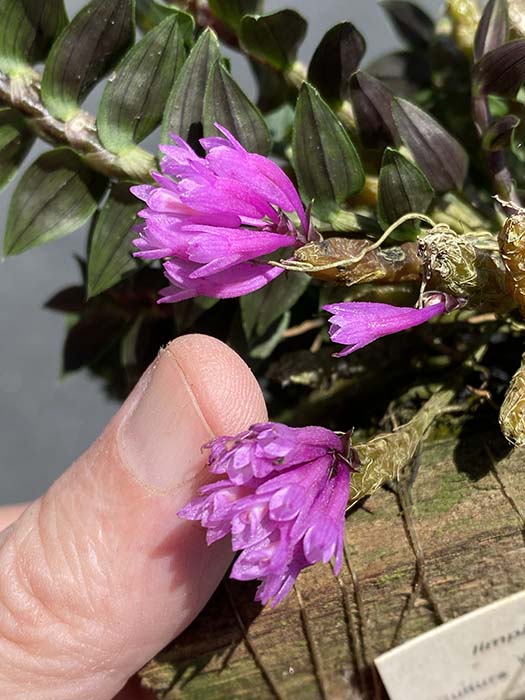 |
Dendrobium limpidumFrom New Guinea and related to D. dichaeoides, but with fatter canes. This plant lost all of its leaves and didn’t put out any new growths a few years ago, but since then has decided to be happy and rebloomed again this year. |
|
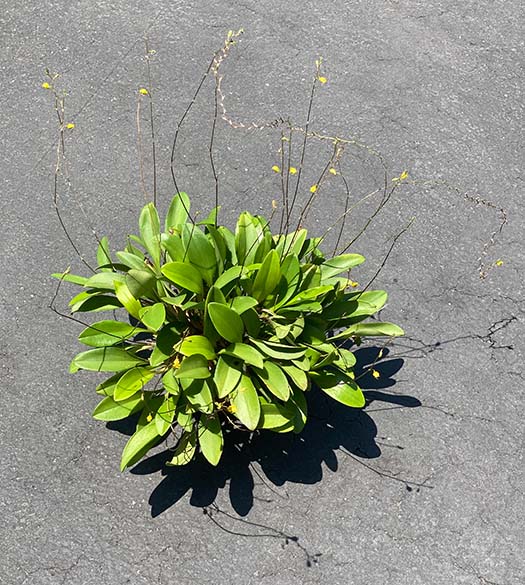 |
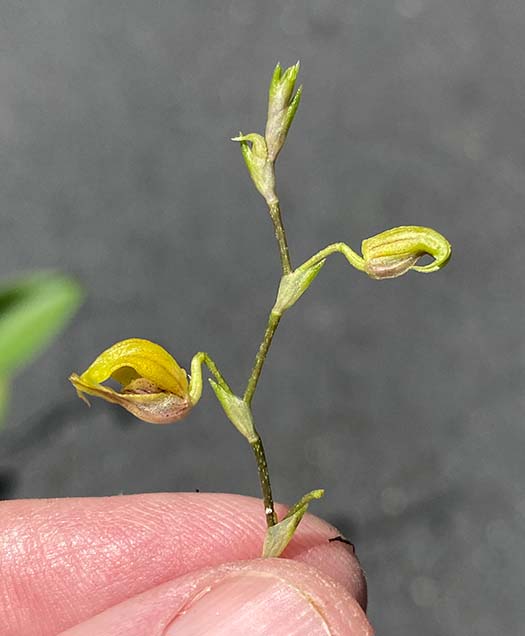
Scaphosepalum bicristatum (verrucosum)From Colombia— very tiny odd-shaped flowers on long wiry scapes. Always in bloom. |
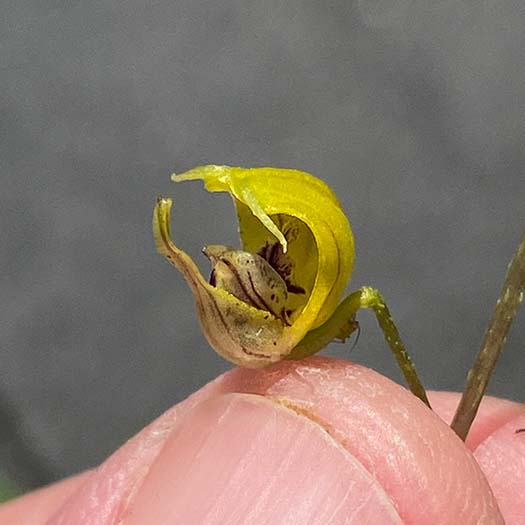 |
|
From Roberta Fox:
|
|
Outside in the Back Yard: |
|
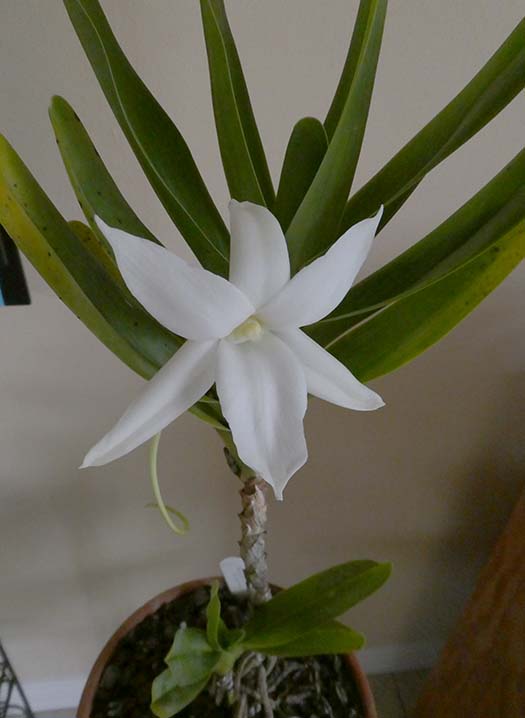
Angraecum sororiumNative to the central highlands of Madagascar. It can experience temperatures down to freezing, and grows fully exposed on rocky outcrops. Mine gets full sun in the morning, until around midday. |
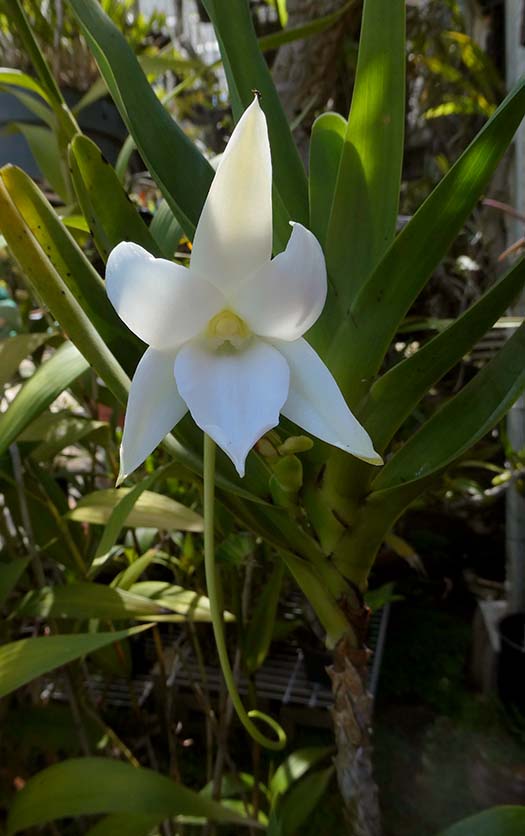 |
Bollea ecuadoranaNative to Ecuador at elevations from 900=1200 m, so one might expect it to resent cold nights. However, this plant doesn't seem to object. Its habitat is very wet. This year was my best blooming so far, with 7 waxy, long lasting flowers. I got it labeled as Bollea coelestis (which is more lavender/coerulea), ID is by Ron Parsons. |
|

Cattleya tigrina (leopoldii)This is not a mini... pseudobulbs about 18 inches. If it grown under warmer conditions, they can get to 2-3 feet. But it blooms every year for me so clearly "cool" is OK. It is quite fragrant. Flowers have heavy substance. Native to southern Brazil, mostly at lower elevations. |
|
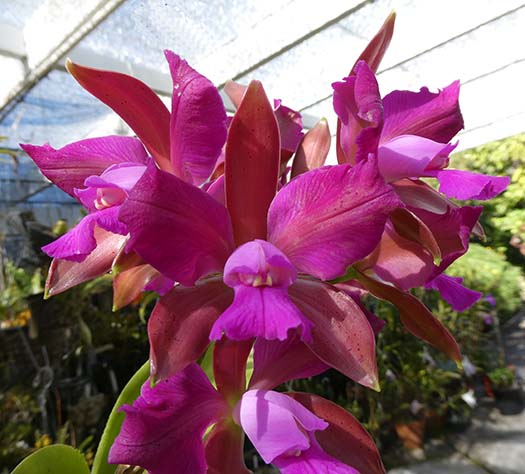 |
|
Cattleya tigrina (leopoldii) f. peloricI got it as an unbloomed seedling, labeled "coerulea". Turned out to be an even more interesting color form. The magenta on the petals mimics the lip, the brown "normal" color shows only on the midribs. |
|
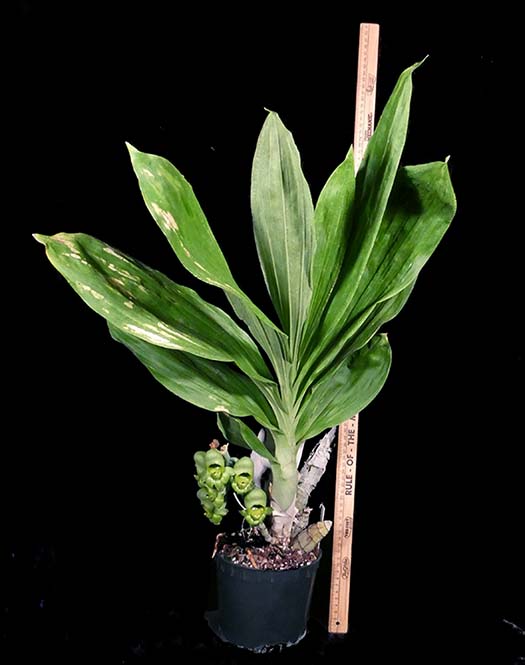
Casetum expansum, femaleThe plant is getting huge, and it's still early in the season. I very likely will get another spike in a month or two. |
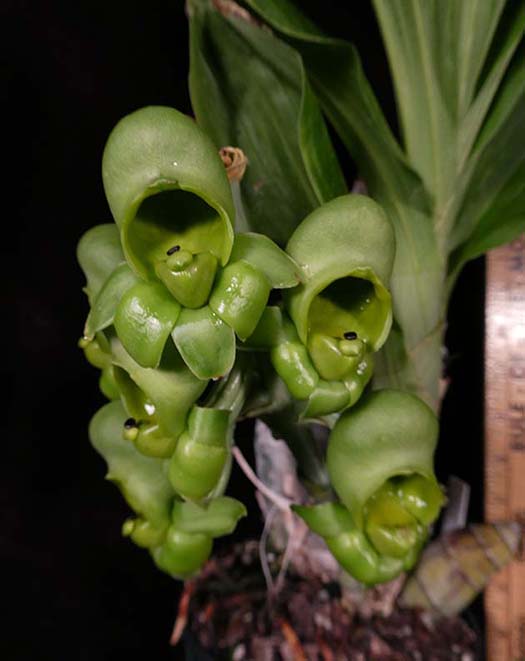 |
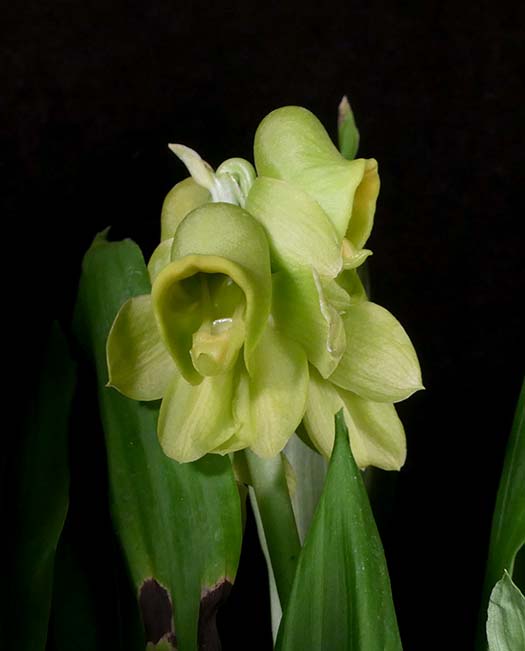 Catasetum planicepsFor most Catasetums, the male flowers are showy in color and form, distinct for each species. But the females all pretty much look alike - green, helmet-shaped (and rather boring). At a superficial glance, these look like female flowers. But on closer inspection, one can see the "triggers", a clear indication of male flowers. I have not yet had female flowers from this plant, so don't have any comparison photos. |
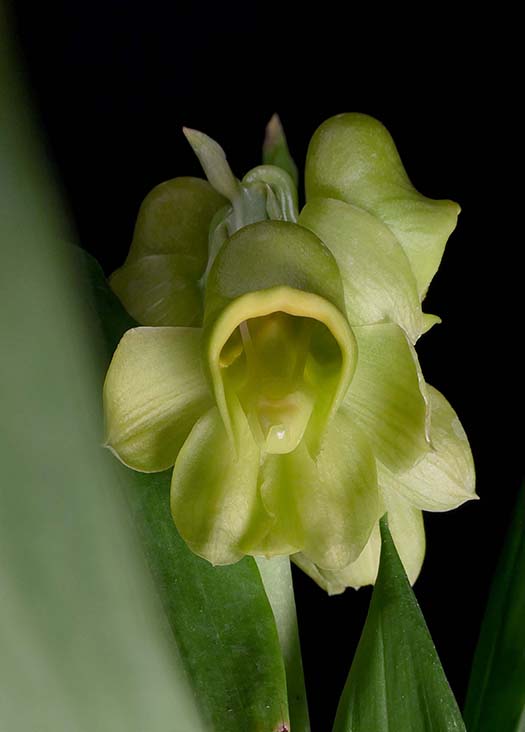 |
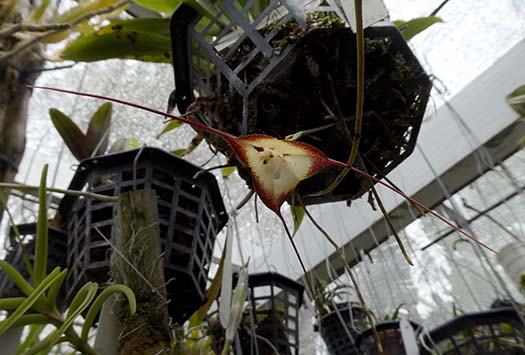
Dracula cordobaeJust getting started for the season, multile spikes on the way. Grows shady and damp. Flowers partially collapse during the heat of the day, opening again in the evening or early morning. |
|
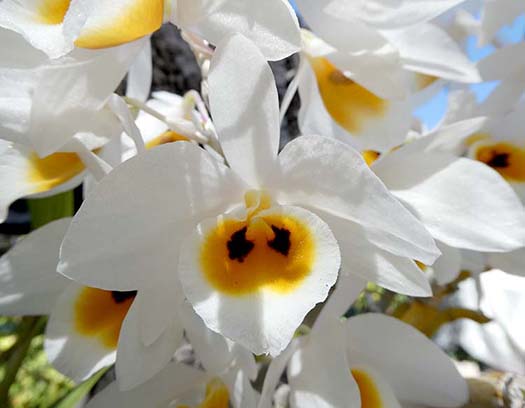
Dendrobium bensoniaeFrom the Himalayan foothills of northern India and Myanmar. It goes completely deciduous in the late fall, and is one of the very few deciduous Dendrobiums that i do keep pretty dry for the winter. It develops buds in early June, and the fragrant vanilla-scented flowers last for nearly two months. It blooms on the previous year's bare canes. It is just now, in late July, starting to show the new green growths. |
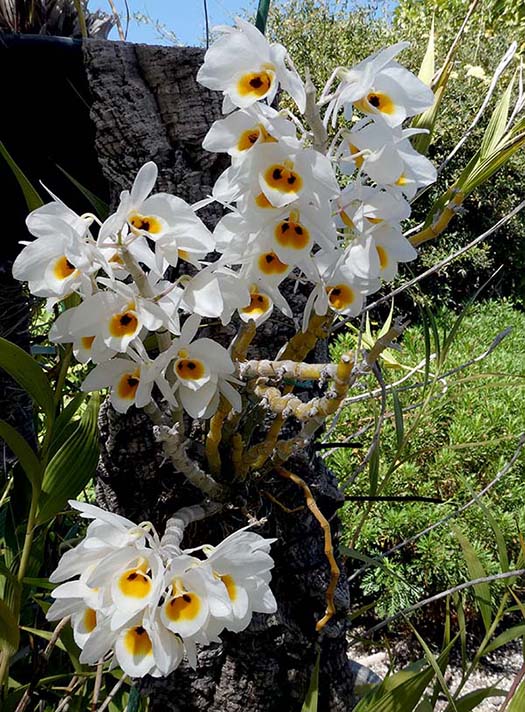 |
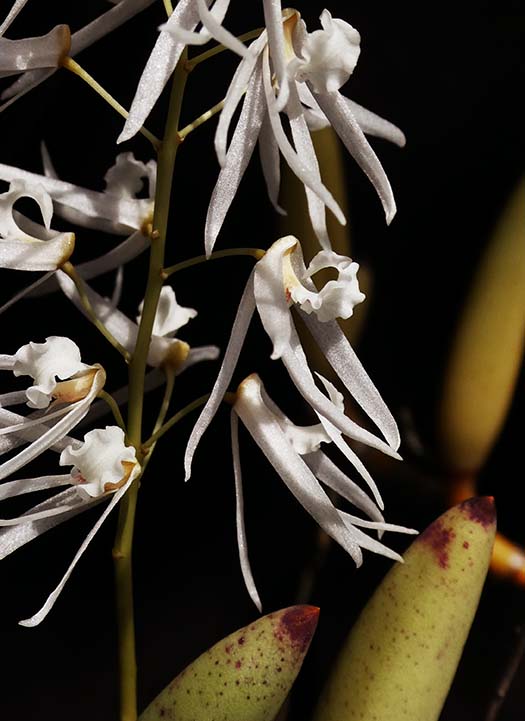
Dendrobium (Dockrillia) wasselliiAn epiphyte/lithophyte from northern Australia. Its habitat is fairly warm, but it grows fairly well for me outside. The very succulent leaves indicate that it experiences a dry season, but there is high humidity and morning dew. I don't reduce water any more than for the rest of my collection. It gets vey bright light. |
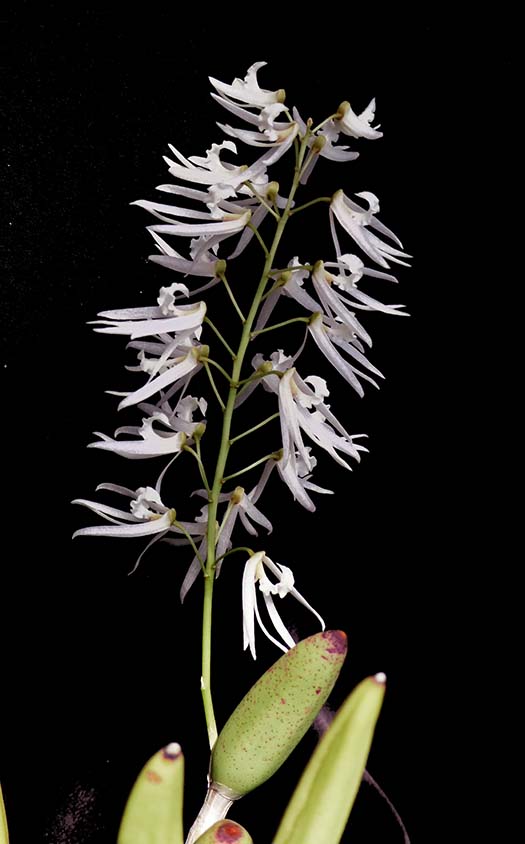 |
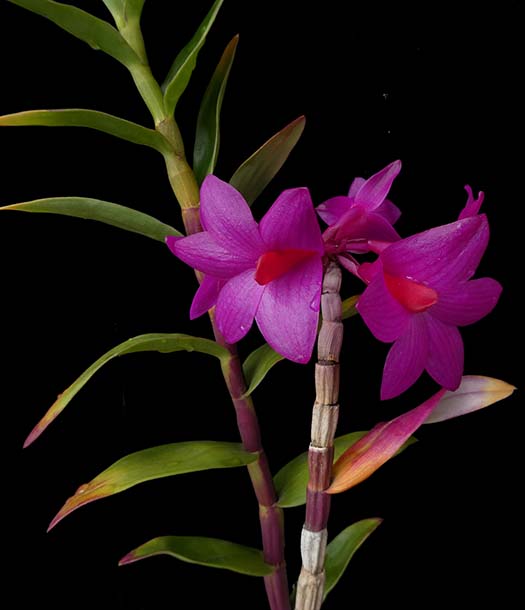
Dendrobium glomeratum (sulawesiense, crepidiferum)If you look for cultural information on this one, all the references say "warm to hot". However, plants can't read. It does very nicely outside, blooming 2 or 3 times a year. (Scott also shows one.) I suspect that there are populations from a range of elevations. Note that it blooms on both leafed and leafless canes (including some that look quite dead, so don't cut!) The intense magenta flowers are rendered even more vibrant by the contrast of the bright orange lip. |
|
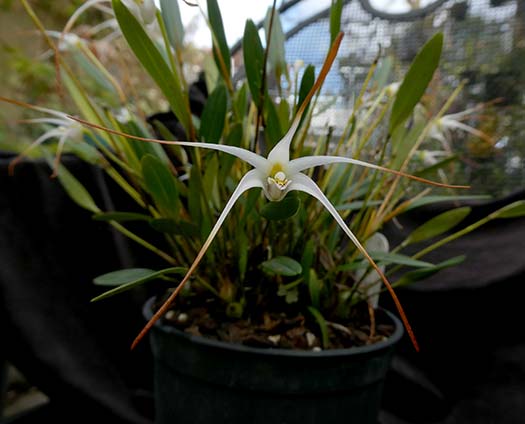
Diplocaulobium aratriferumI also got a nice flush bloom from my plant, a few days after Scott's. (They sometimes bloom at exactly the same time, but this time just close, not in synch) Flowers last less than a day. As they age a bit, they go from white to pink, then close. Now classified as Dendrobium. |
|
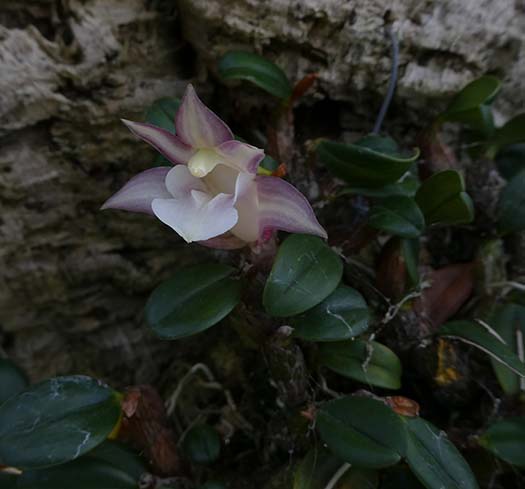
Epigeneium (Dendroibium) fargesiiNow classified as Dendrobium. It blooms about twice a year. The candy cane pattern on the bud remains on the back of the open flower. It is native to south and southeast China, eastern Himalaya, and Taiwan. It has a mat-formaing growth habit. |
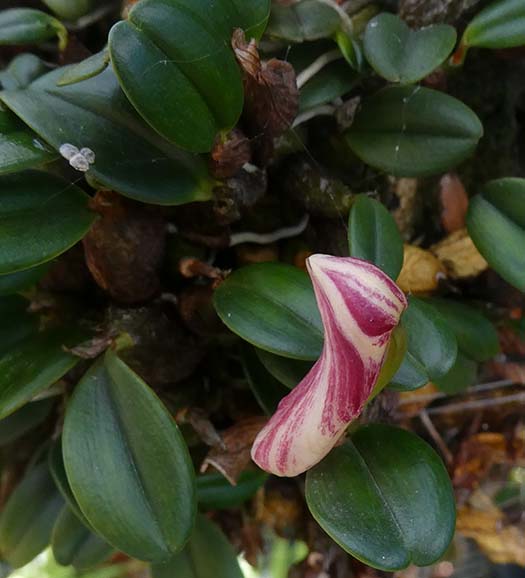 |
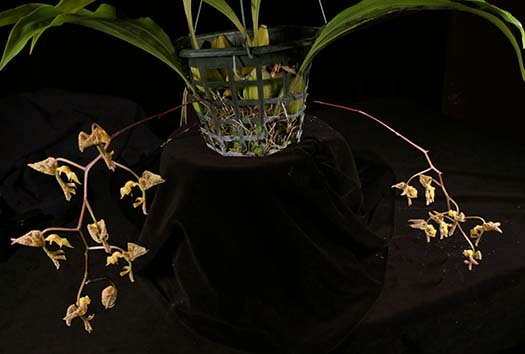
Gongora maculataGongora is closely related to Stanhopea. But these flowers last a lot longer than my Stanhopeas, a week to 10 days. Flowers are very fragrant. |
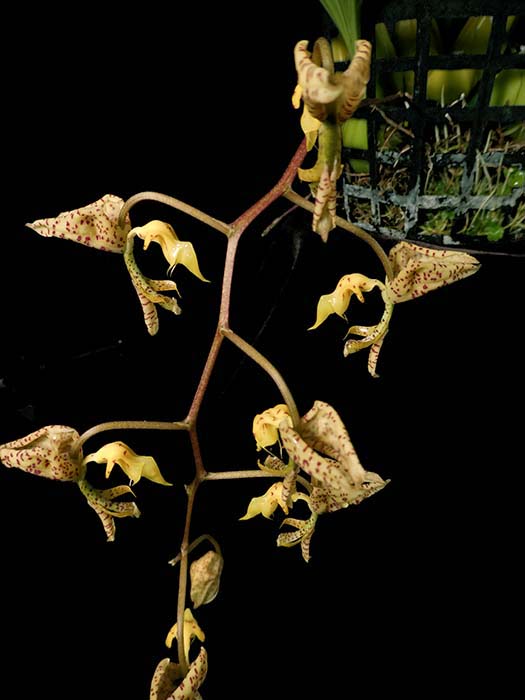 |
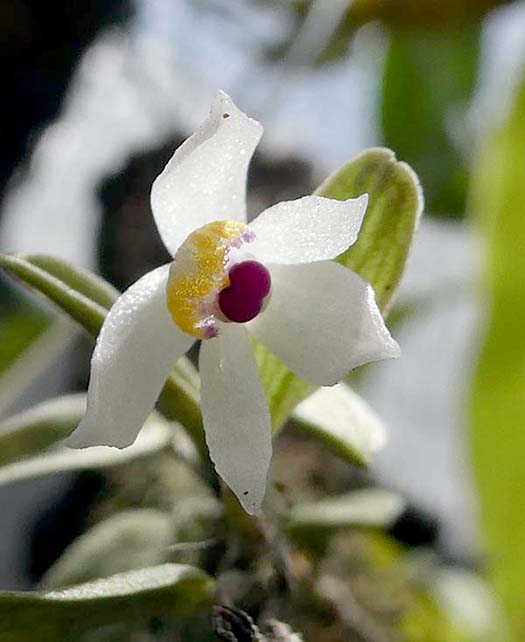
Loefgrenianthus blanche-amesiaeThis is a charming little twig epiphyte in the Cattleya tribe, with a name that is bigger than the plant. The flowers hang downward, so one needs to get underneath, or flip the plant over, to see how beautiful it is. It is native to southeastern Brazil at elevations form 1000-2000 m. |
|
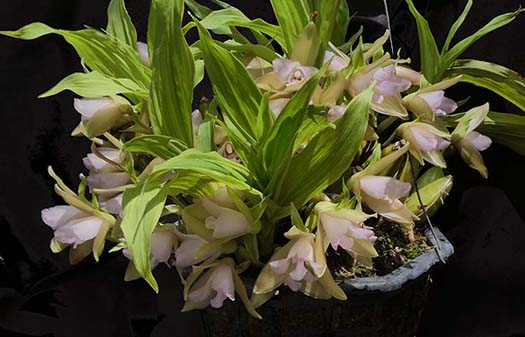
Lycaste tricolorYou have to look to find the three colors... the sepals are greenish, the petals are pale pink, but the throat is dark raspberry. This Central American native is a flower machine. I didn't even try to count the flowers, but they formed a ball around the plant. |
|
Masdevallia trochilusA spike can bloom repeatedly over two years or so. Flowers have fairly heavy substance, and it seems to be one of the more warmth-tolerant species. |
|
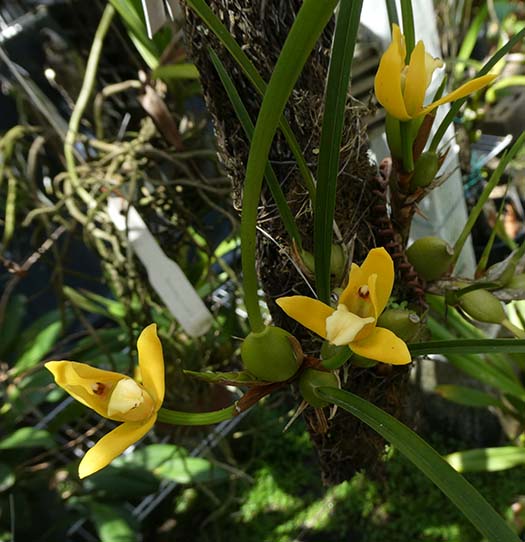
Maxillaria tenuifolia f. aureaThese have the same coconut fragrance as their red siblings. The butter-yellow flowers almost glow. |
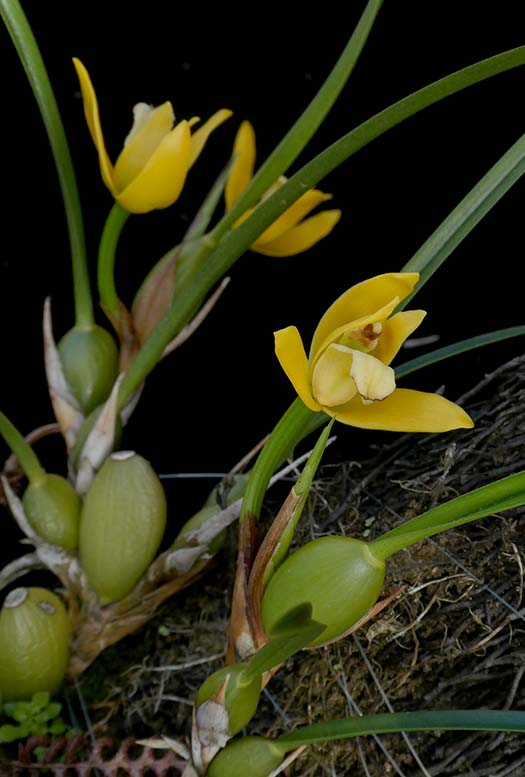 |
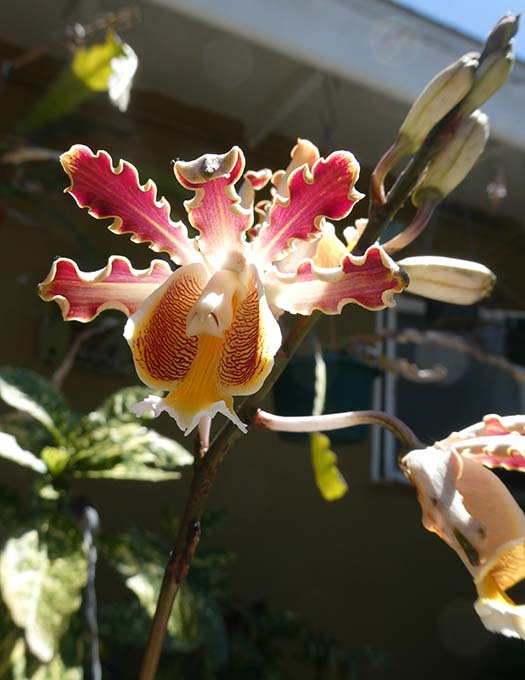
Myrmecophila tibicinisOne of the genera that used to be Schomburgkia. Unlike the ones that ended up in Laelia, these have hollow, chunky pseudobulbs that are home to ants in nature (hence the name). The lip is also quite different than for those Schomburgkias that ended up in Laelia. Most of the species in this genus are warmer growing, but this one tolerates cool winter temperatures. |
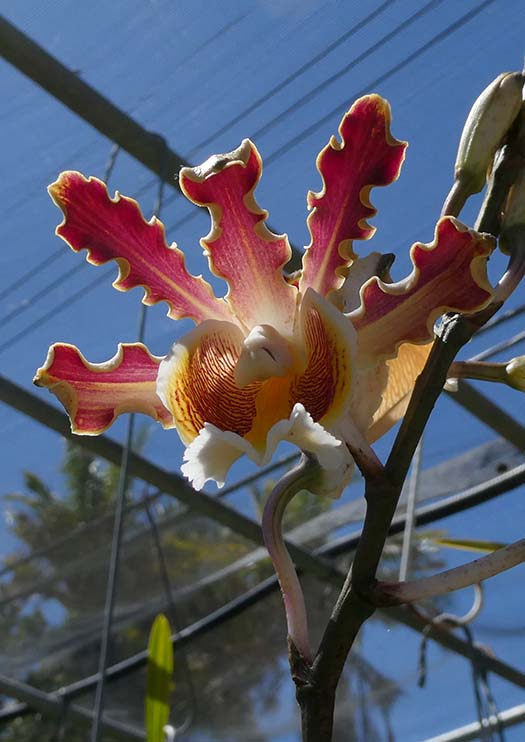 |
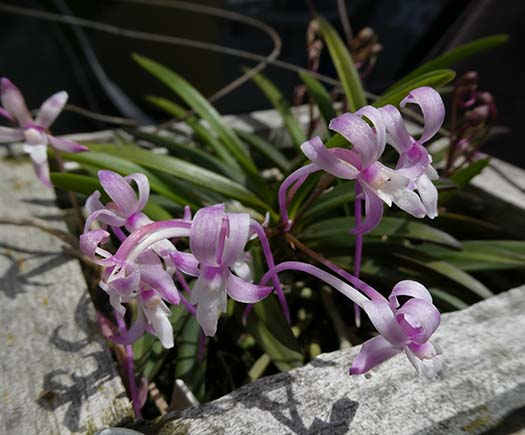
Vanda (Neofinetia) falcata 'Beni-suzume' 紅雀Neos are starting show buds, this was the first to bloom. Flowers have a lovely vanilla fragrance, especially at night. I love the delicate pink flowers of this variety |
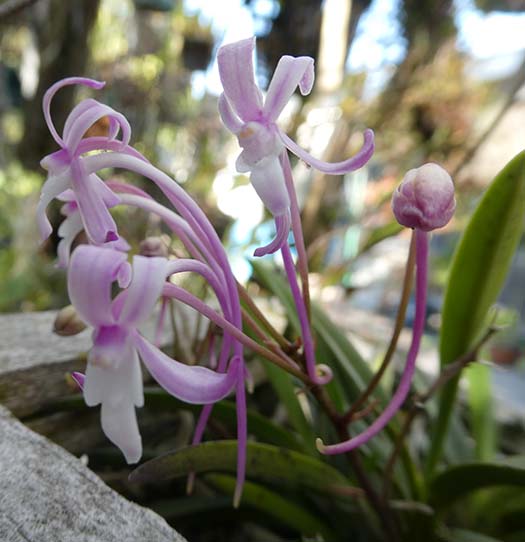 |
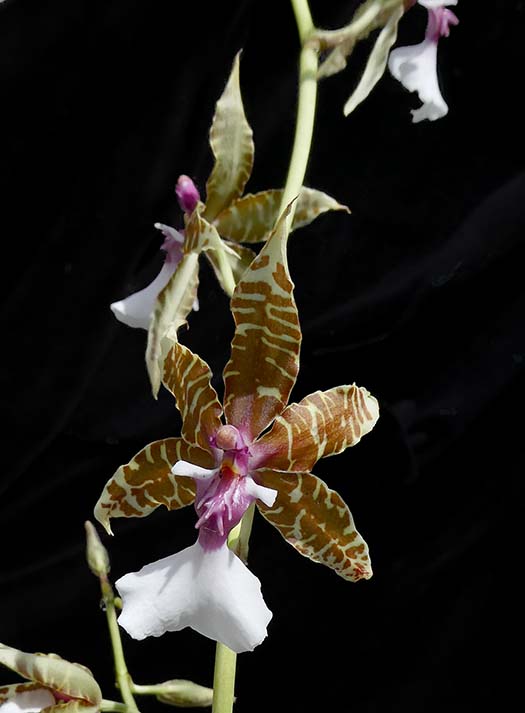 |
|
Oncidium hastilabiumFormerly Odontoglossum. Native to Peru, Ecuador, Venezuela and Colombia, at elevations around 1500 m. Spike is slow to develop, and the flowers open over a period of about two months. |
|
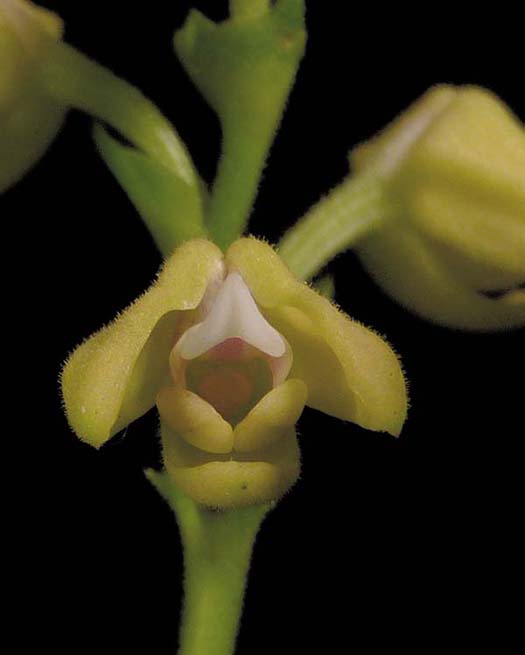
Polystachya zambesiacaNative to a wide swath of Africa, at elevations from 900 to 2000 m. While many members of the genus are warm growing, this little plant is very tolerant of cool temperatures. Flowers are about 1/2 inch, with heavy substance, and last a month or more. |
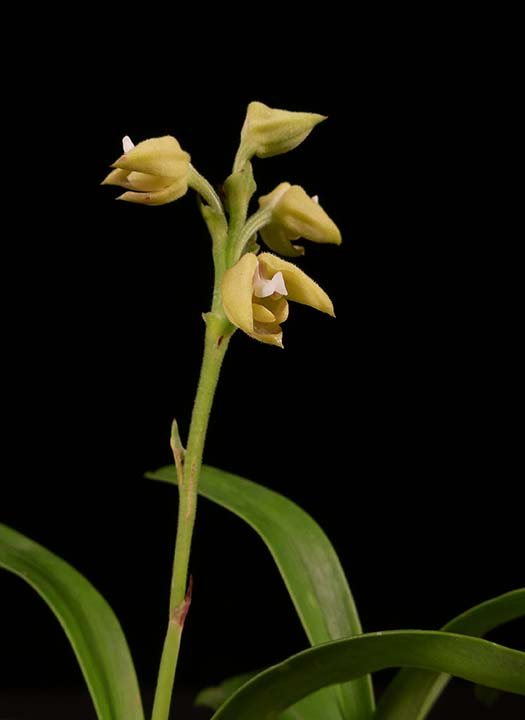 |
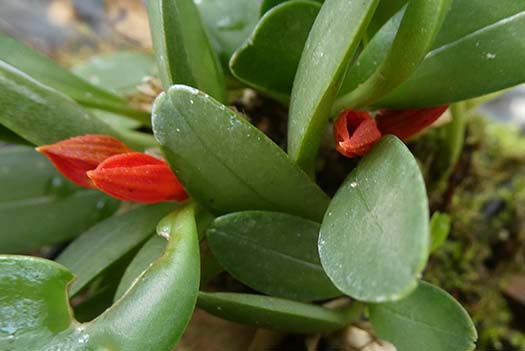 |
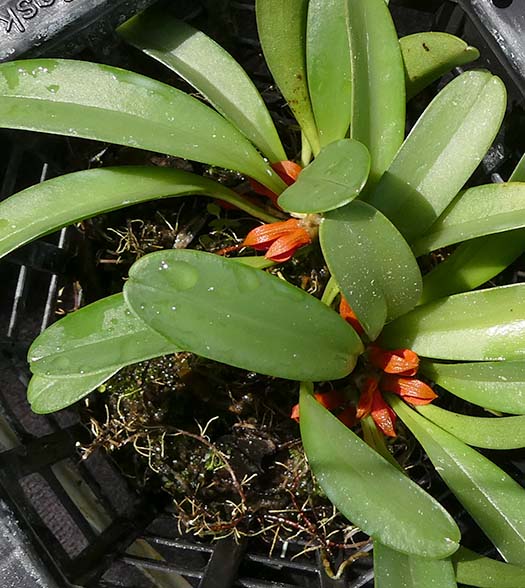
Pleurothallis tribuloidesThis species occurs in southern Mexico, Central America, and the Caribbean at a range of elevations. My more floriferous plant (above) has been growing in the greenhouse, I have just had it longer that the other on the right that I am growing outside. I have every expectation that the outdoor one will catch up in a couple of years. Flowers are about 3/8 inch, but color makes them clearly visible. So where to grow this one? Anywhere you want to. |
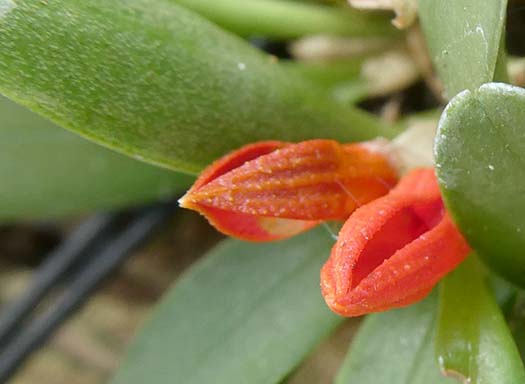 |
|
 1.jpg)
Stanhopea oculata (bucephalus)This came to me as Stan. buchepalus ('Ruth Marie Christian' AM/AOS x self). Stan. bucephalus is considered a synonym for Stan. oculata. But it has none of the ring-like markings that give the species its name ("eyes") and blooms in July where my typical Stan. oculata has the "eyes" and blooms in November or late October. So are they they same? If the same species, certainly different populations. Delightful fragrance. |
|
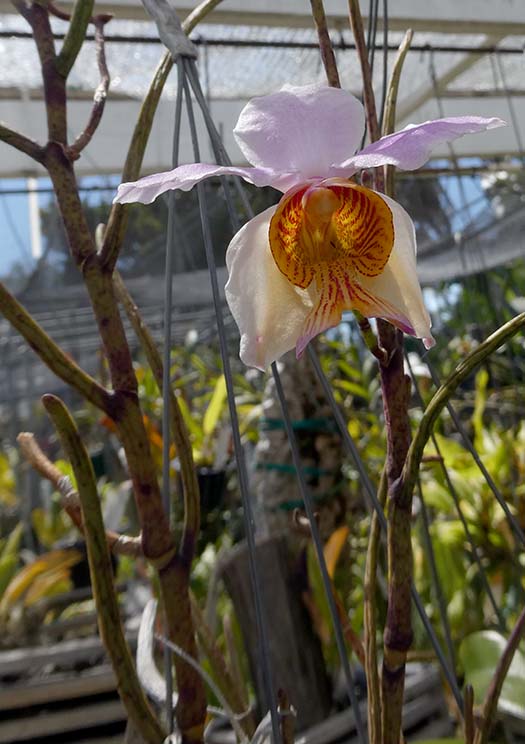
Papilionanthe teresThese were previously referred to as "terete Vandas", but now are in their own genus. Supposedly a warm grower, but grows and blooms on my patio. |
|
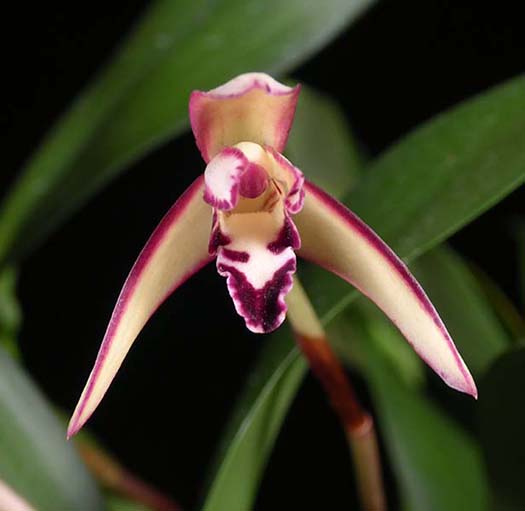
Maxillaria marginataStriking contrast between the cream-colored flowers and the dark burgundy markings. Plant is extremely vigorous, extending far beyond its 10 inch basket |
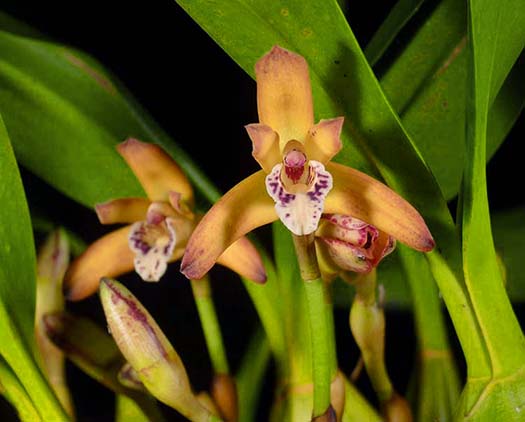
Maxillaria phoenicantheraAnother very vigorous plant. Related to Max. picta, flowers are similar. The red spotting on the buds continues on the backs of the sepals once the flowers open. |
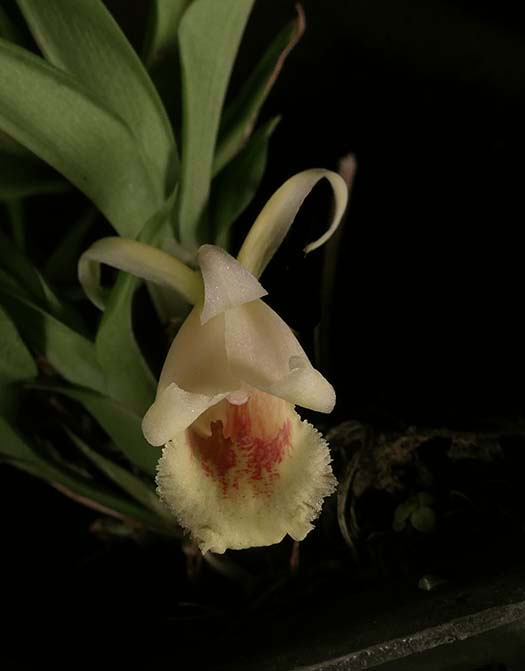 |
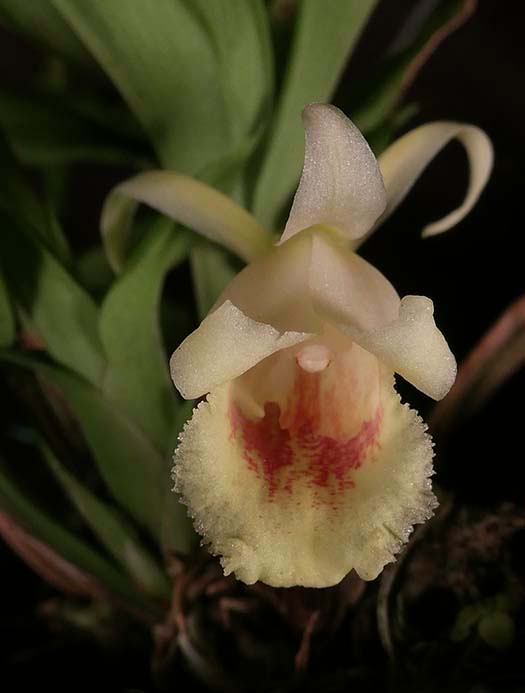 |
Benzingia (Chondrorhyncha) reichenbachianaA strange little flower. First blooming for me. Native to Colombia, Costa Rica, Panama at elevations from 700-1400 m, so it can adapt to a range of temperatures. |
|
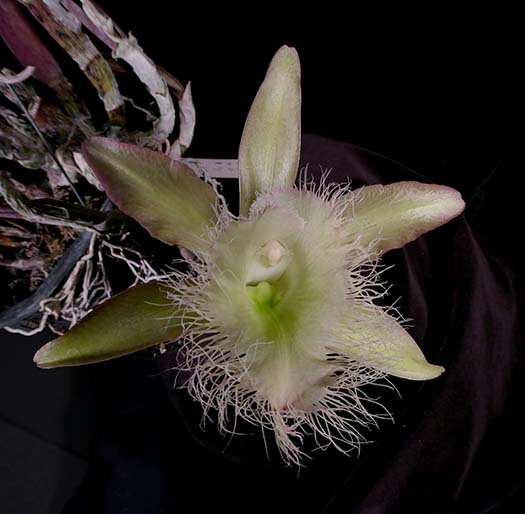
Rhyncholaelia digbyana 'Solana Beach'This cultivar has more than the usual amount of pink in the fringes of its frilly lip. It has a lovely lemony fragrance, especially in the evening. |
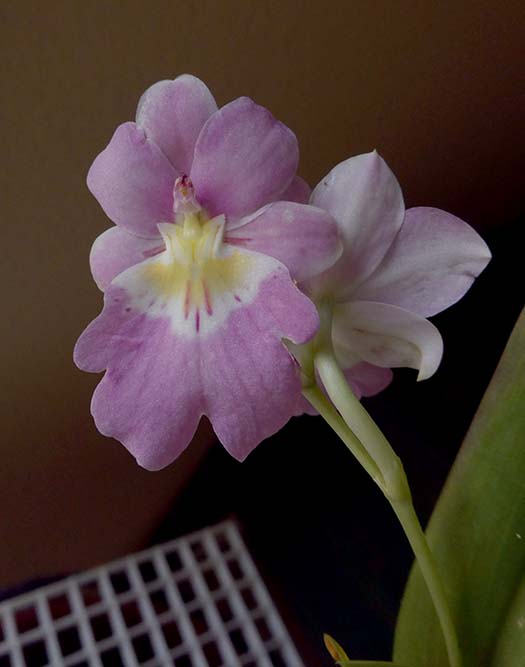
Miltoniopsis vexillariaI have failed rather dismally with Miltoniopsis hybrids, but this species has thrived. It is native to Bolivia, Colombia, Ecuador and Peru, from a fairlly wide range of elevations, 1300-2500 m. While many of the genus are fussy, not happy either below 50 deg F or above about 80 deg F, this species is much more forgiving. |
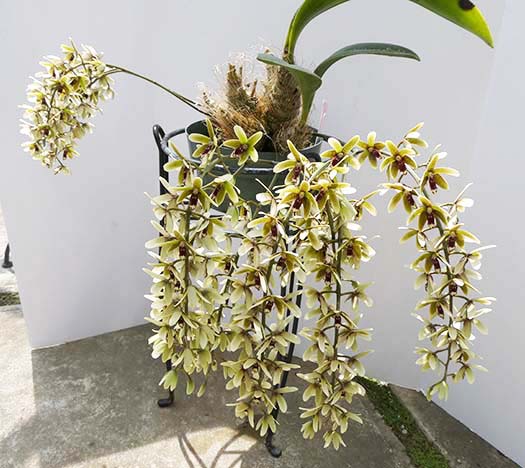
|
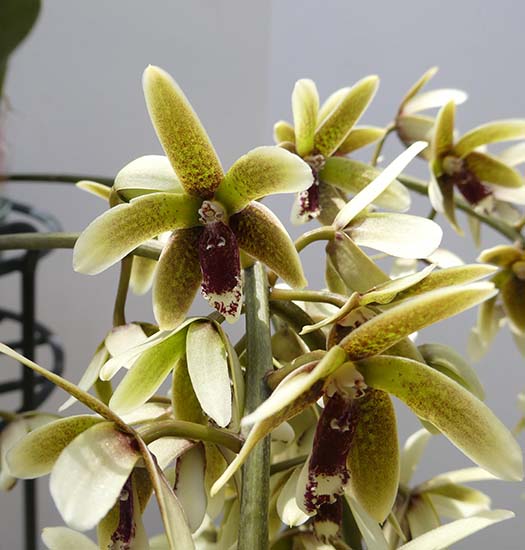
Inobulbon (Dendrobium) munificumEndemic to New Caledonia. The mature pseutubulbs have lots of hairs at each node so the overall impression is "furry". It got lumped into Dendrobium to avoid monotypic genera, but it's quite unique. It produced inflorescences both on the newest pseufobulb, and on an old leafless one. |
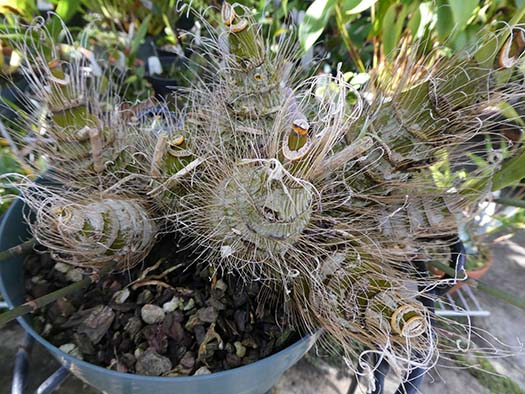 |
|
In the greenhouse... |
|
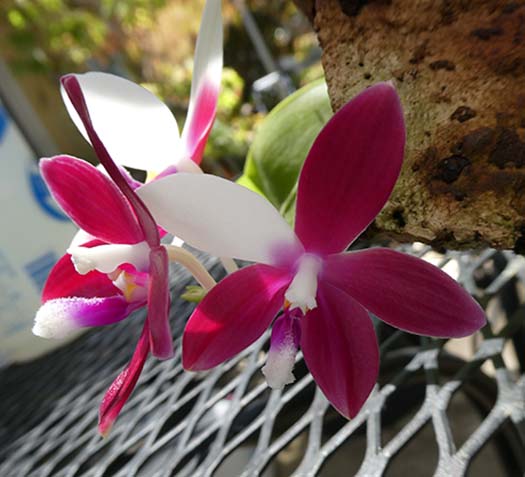 |
|
Phalaenopsis speciosaUpper left is the whole inflorescence. The following three photos feature each of the three flowers - all different. And the next time it blooms, I'll get a different combination. This and the closely-related Phal tetraspis have this charming variability. It blooms sequentially from the same spikes, so don't cut any that are green. A big thank you to Cheryl DiDonna for this lovely plant. |
|
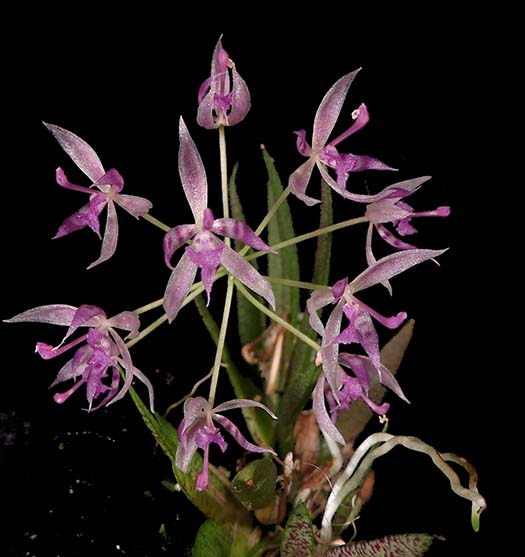 |
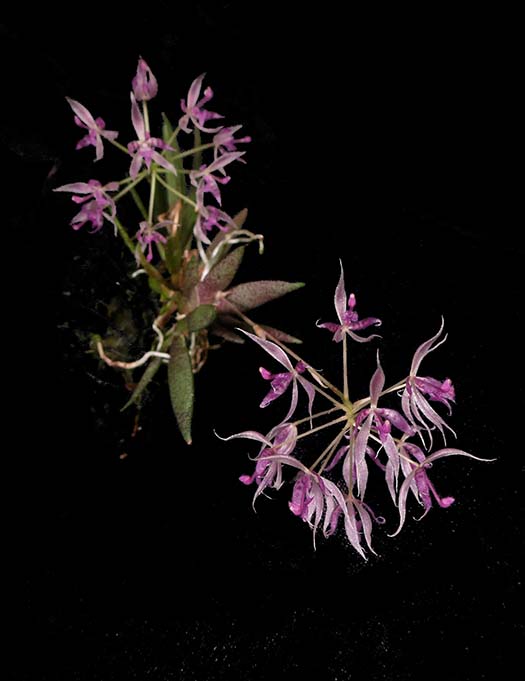 |
Macroclinium manabinumHard to think of this miniature as macro-anything. The leaves are about an inch. The intricate and delicate flowers are arranged in an umbel that remind me of a dandelion. The thin, almost thread-like inlorescences can bloom several times. |
|
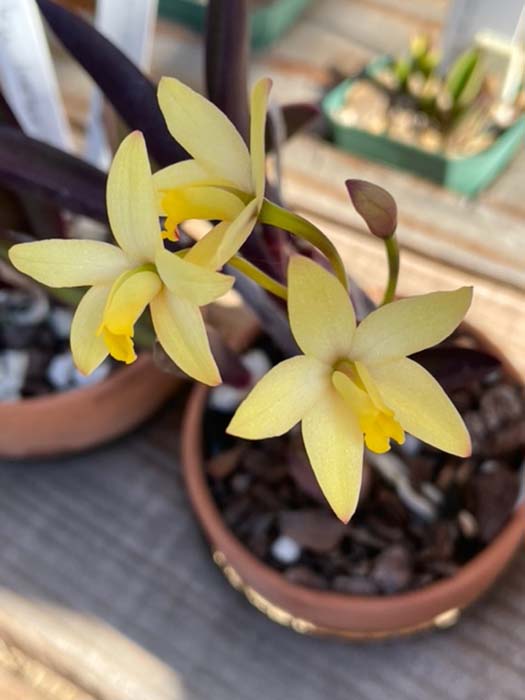
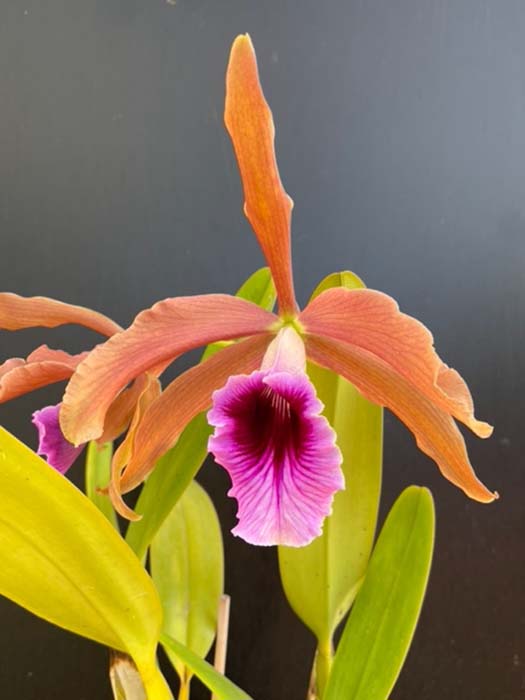
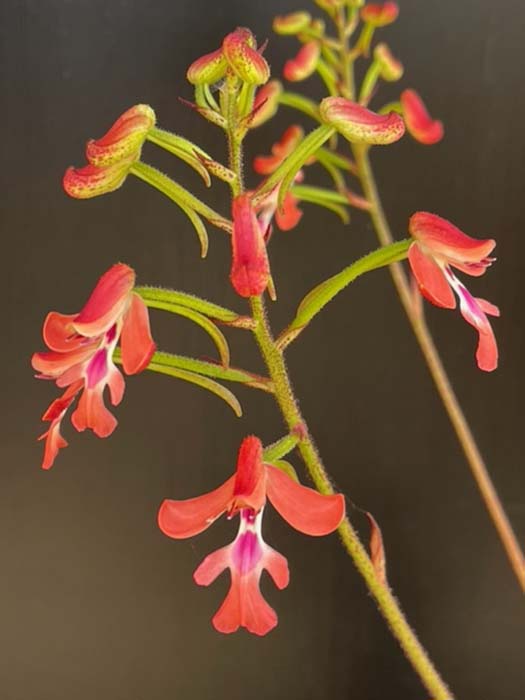
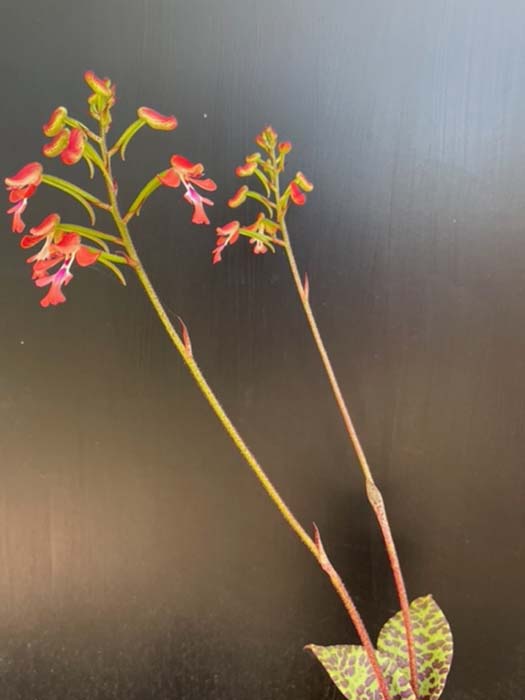
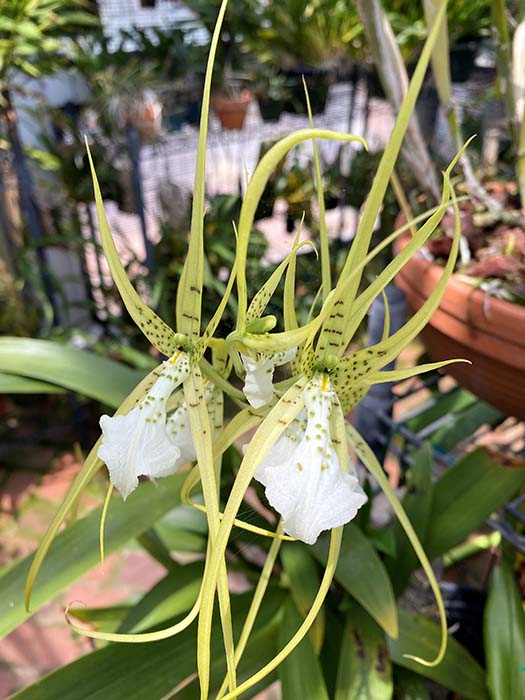
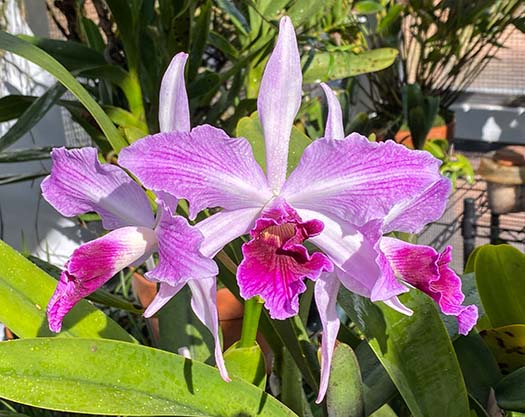
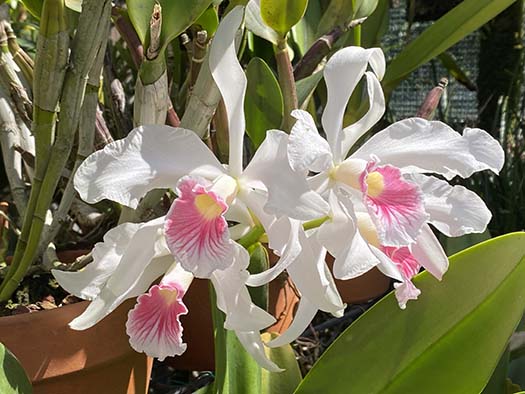
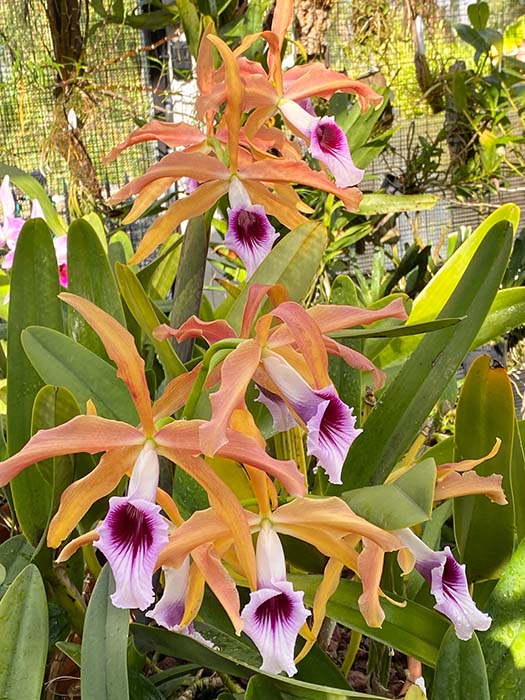
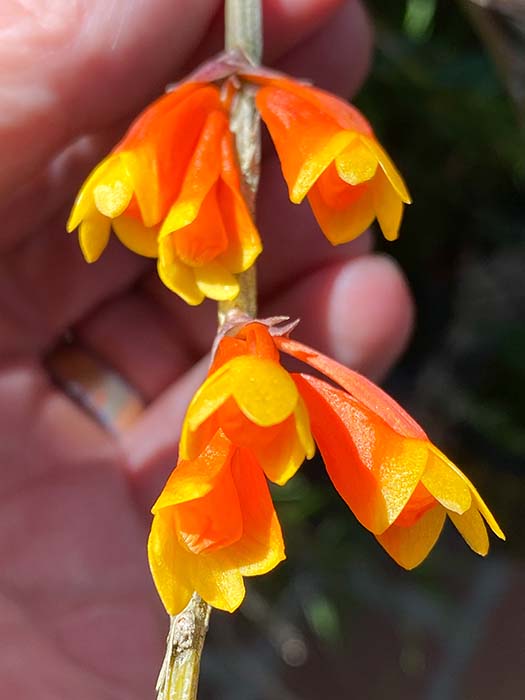
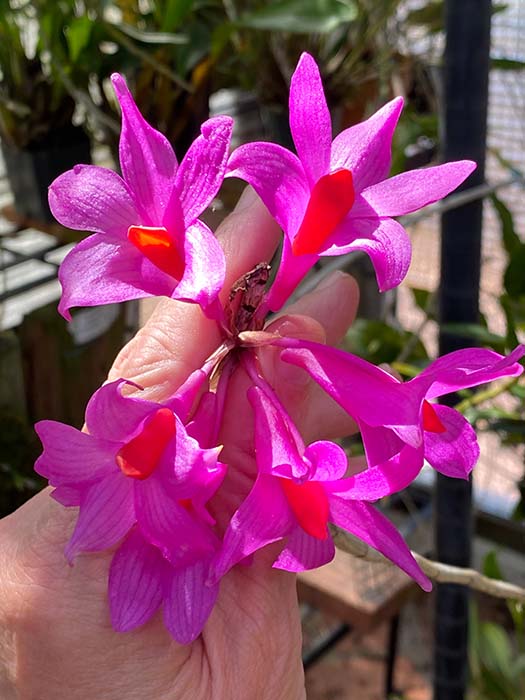
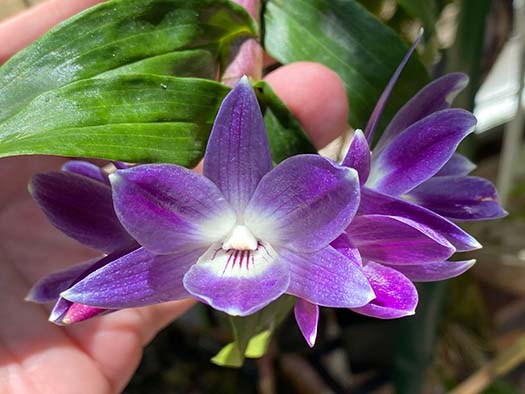
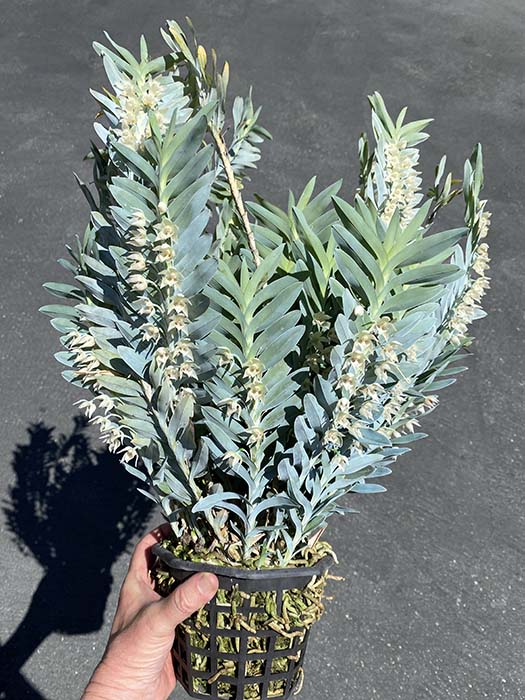
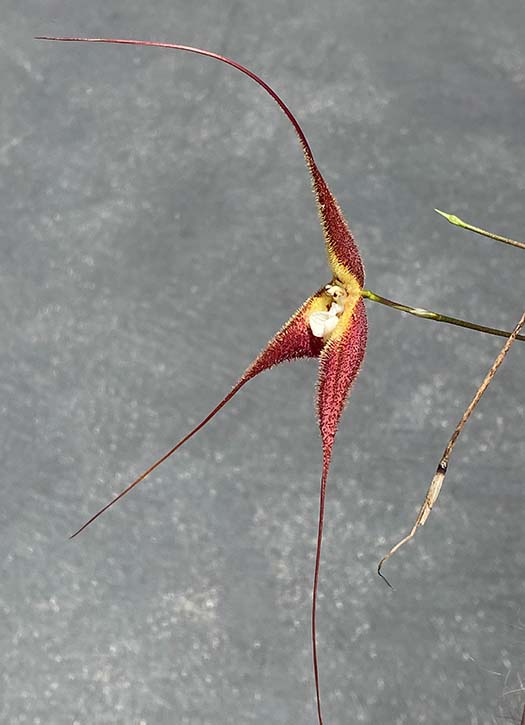
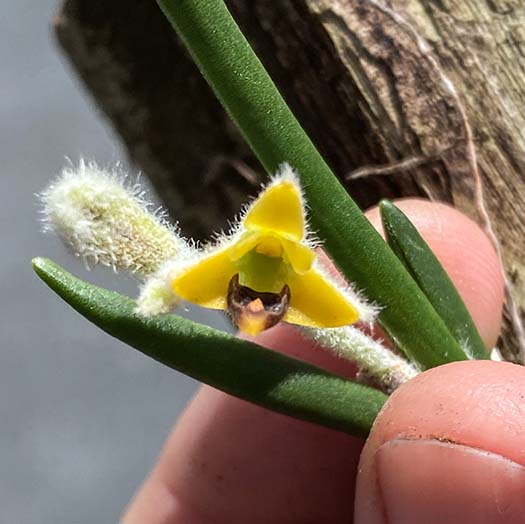
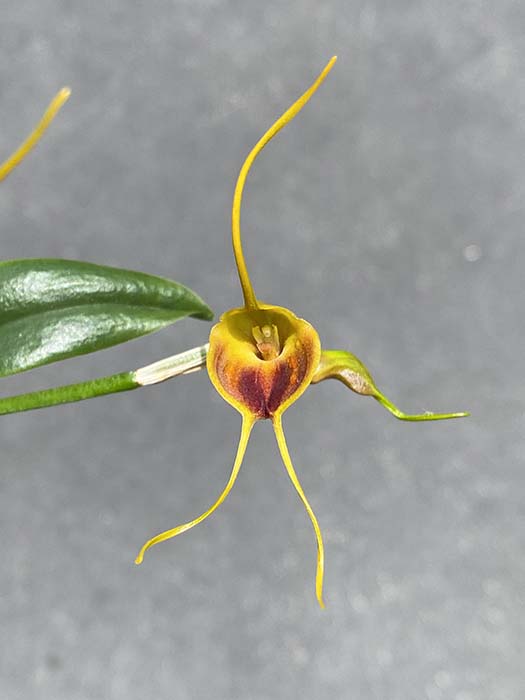
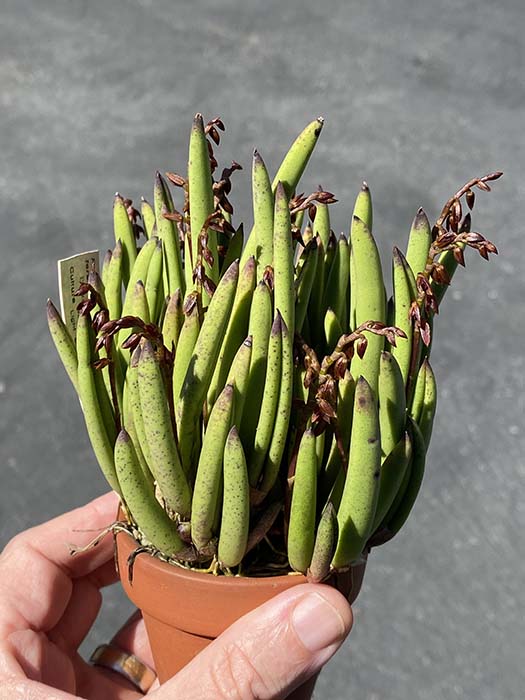
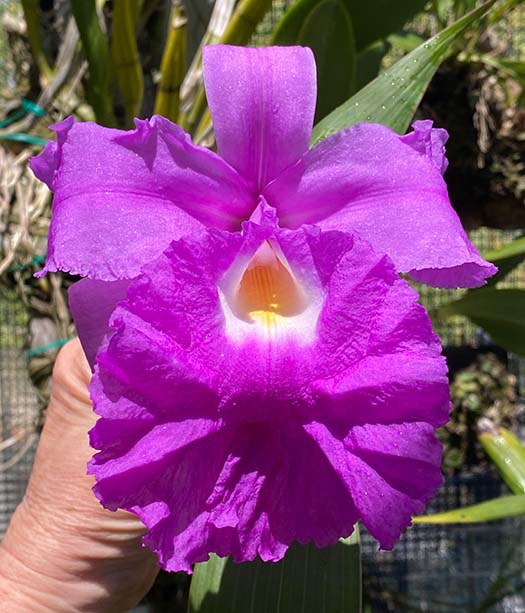
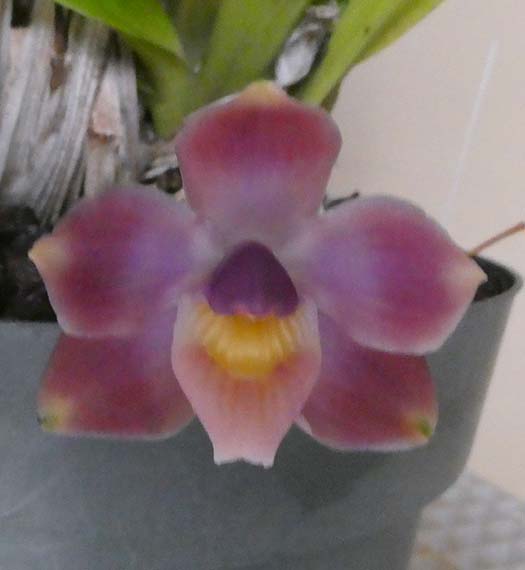
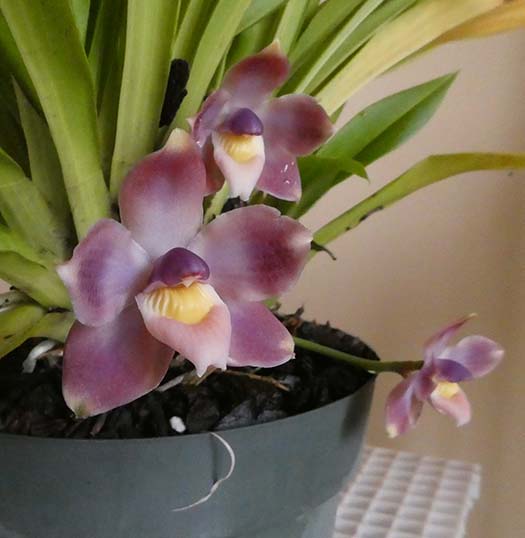
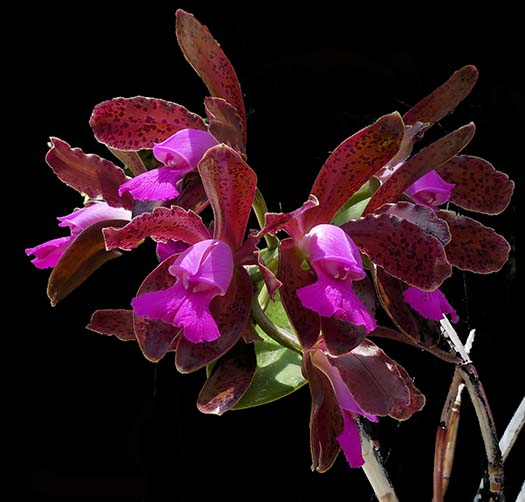
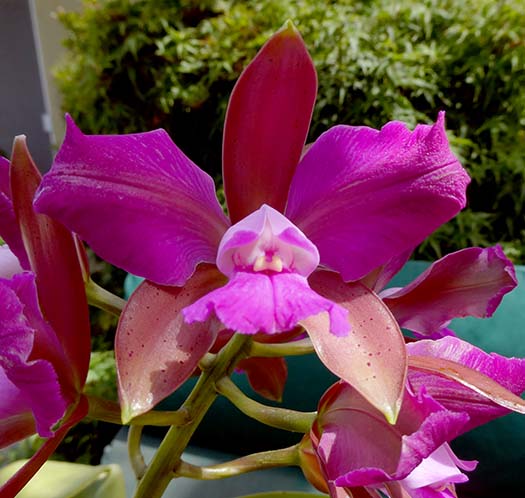
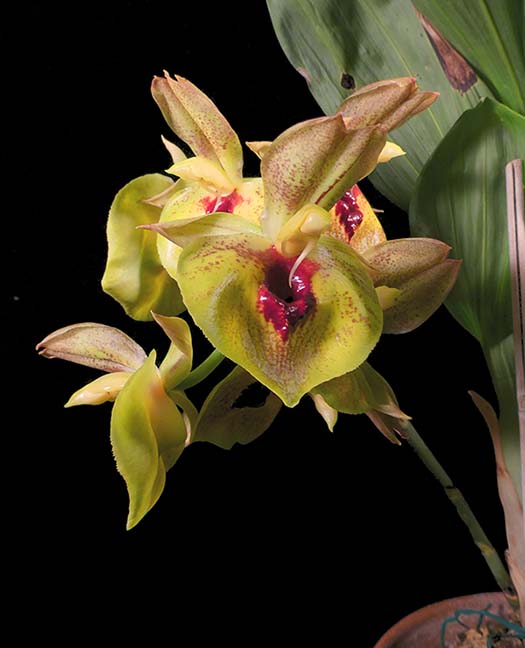
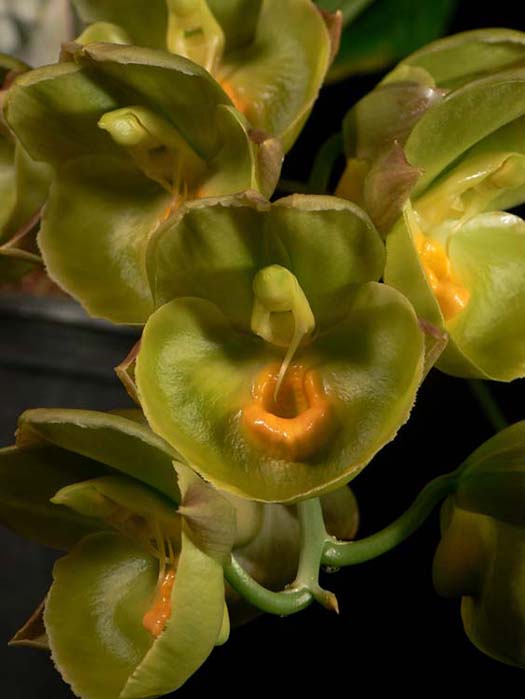
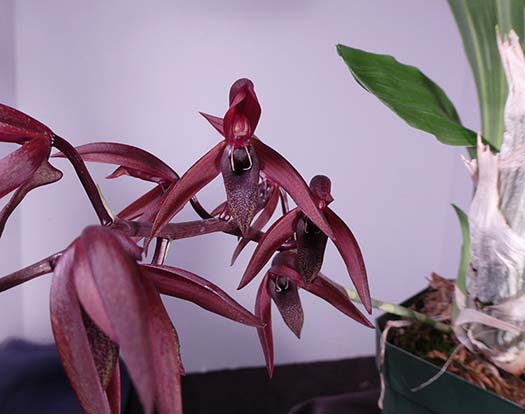
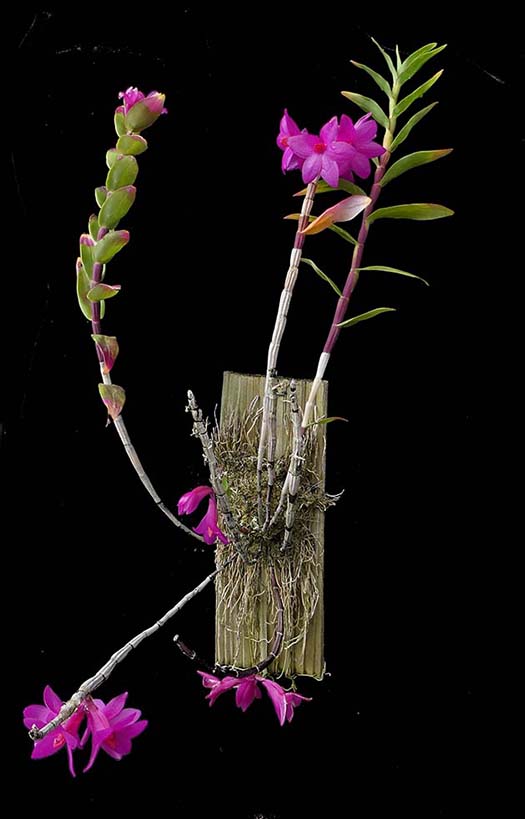
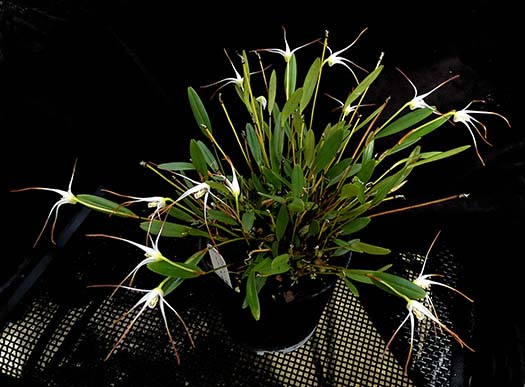
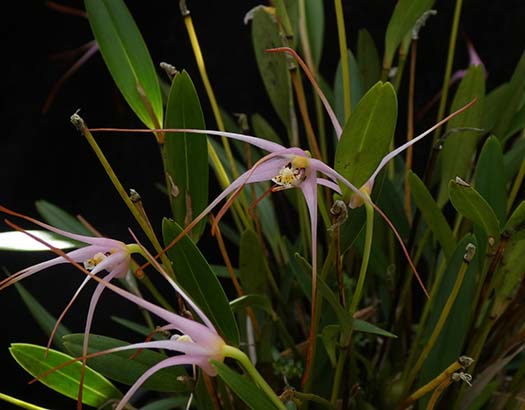
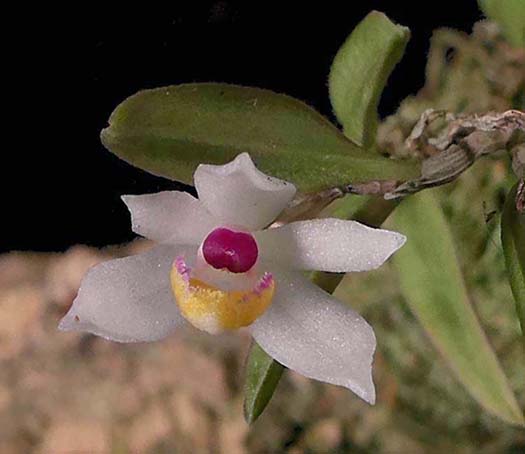
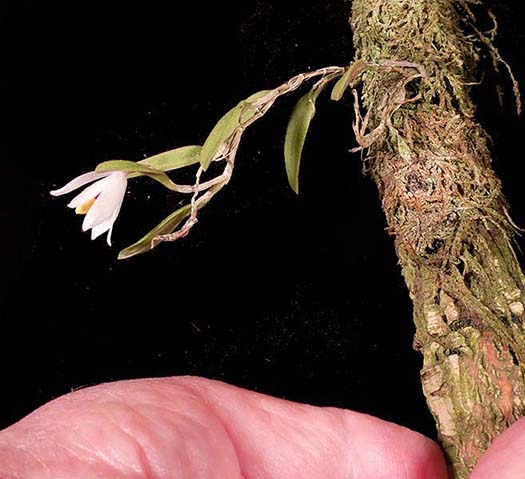
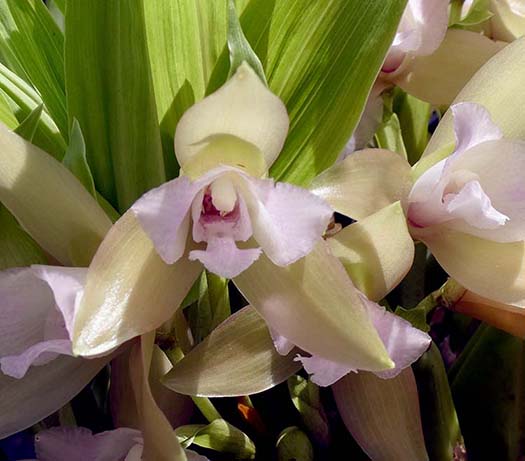
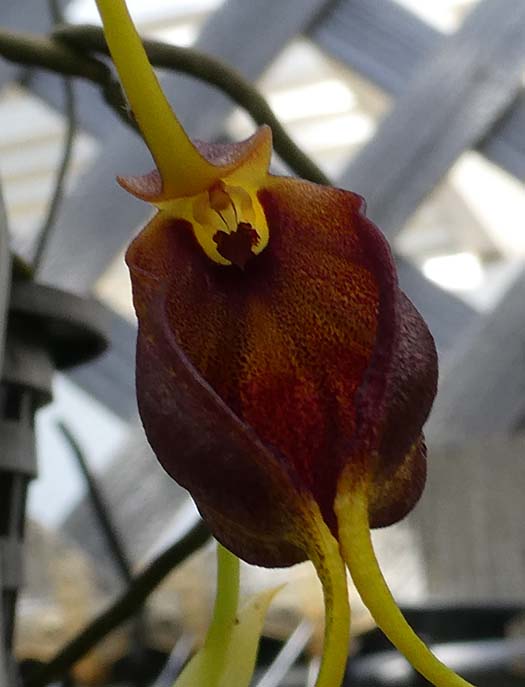
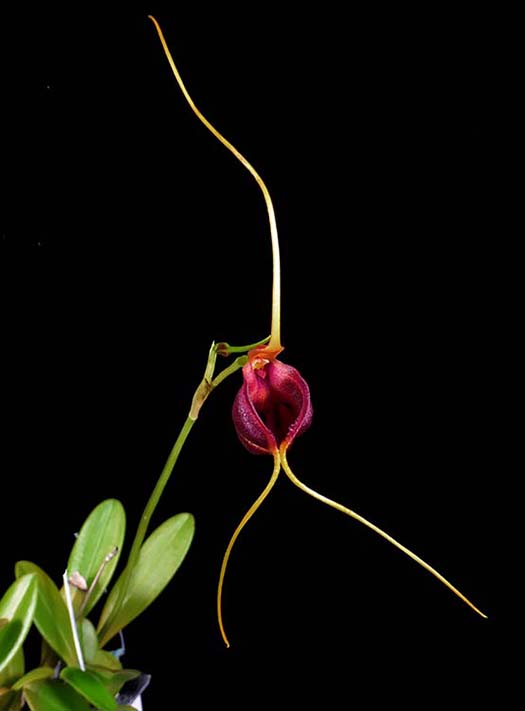
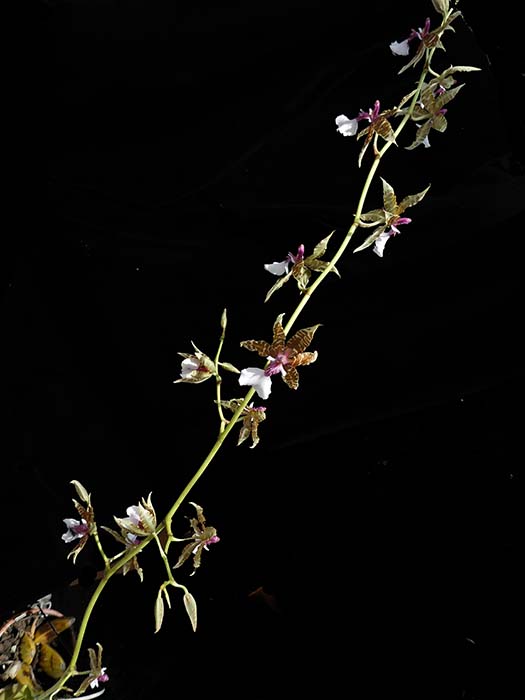
 2.jpg)
